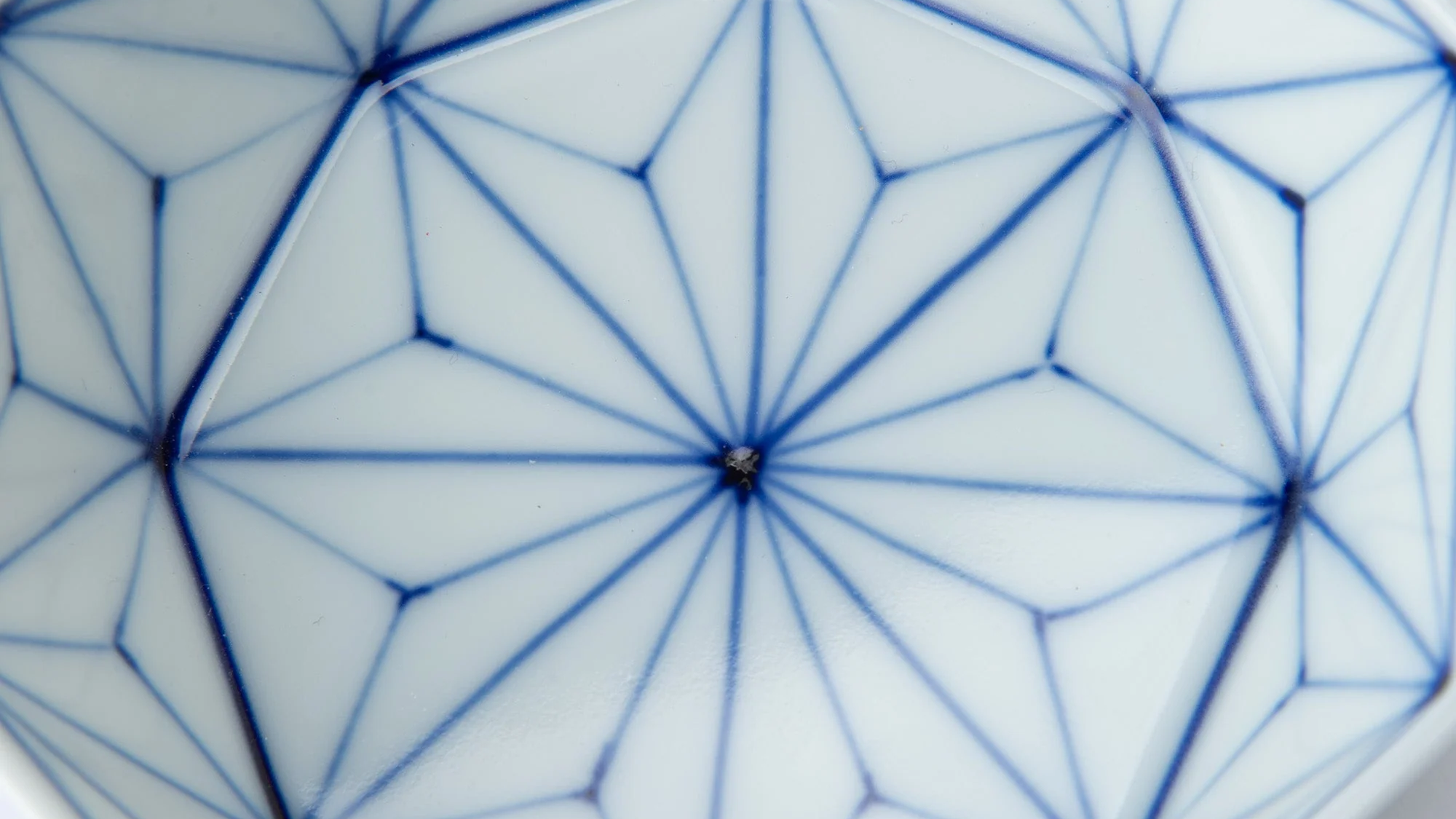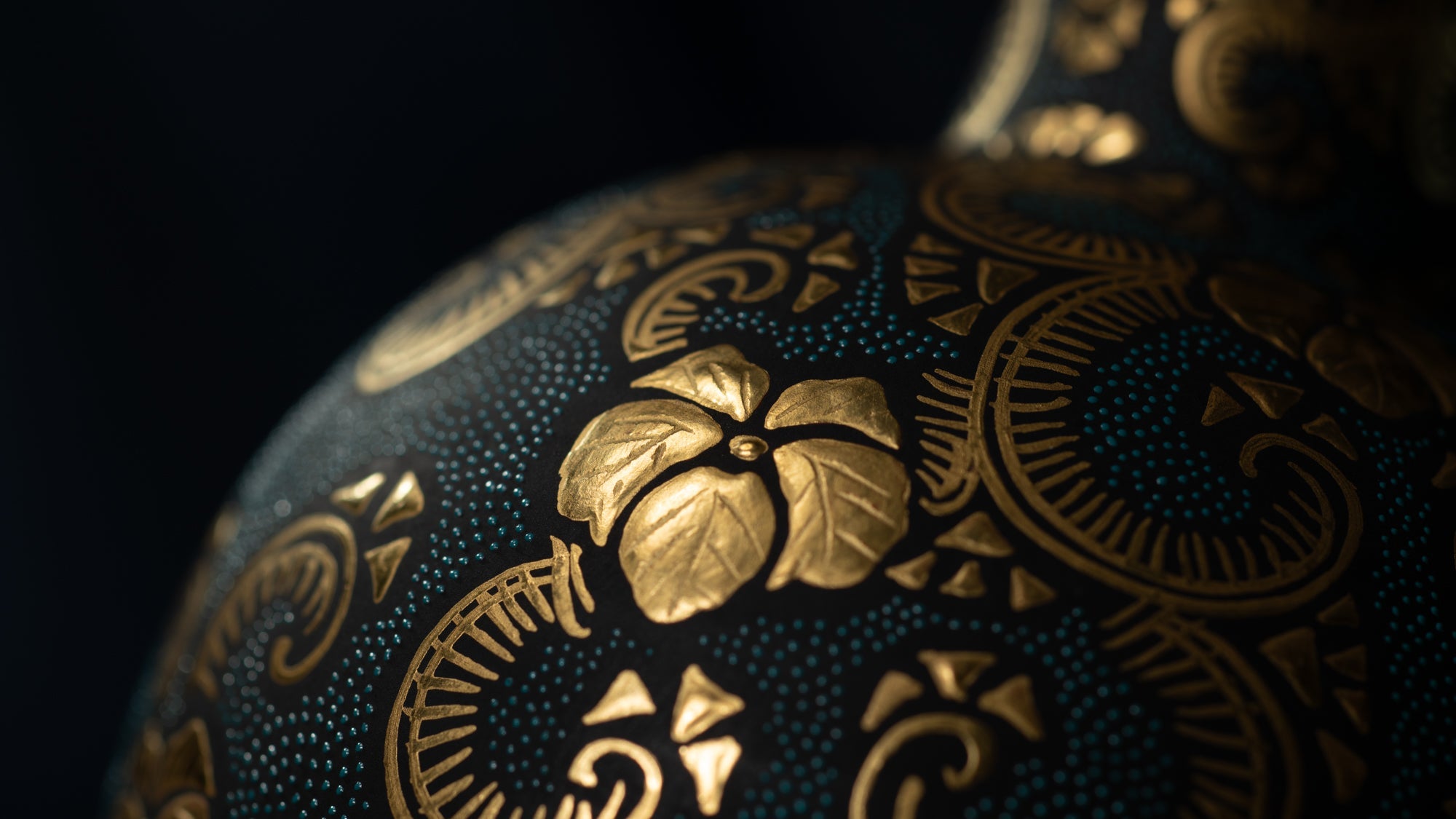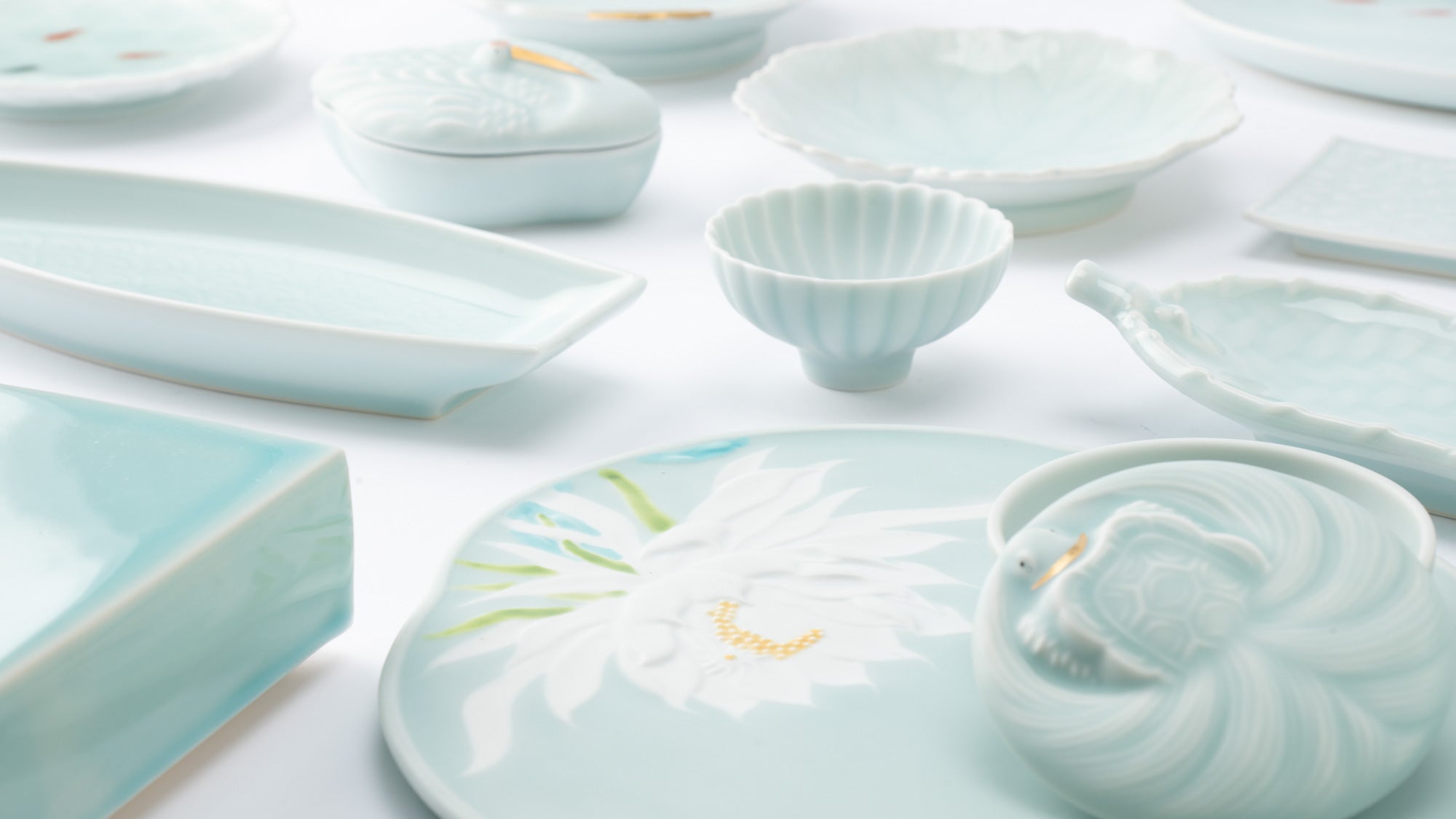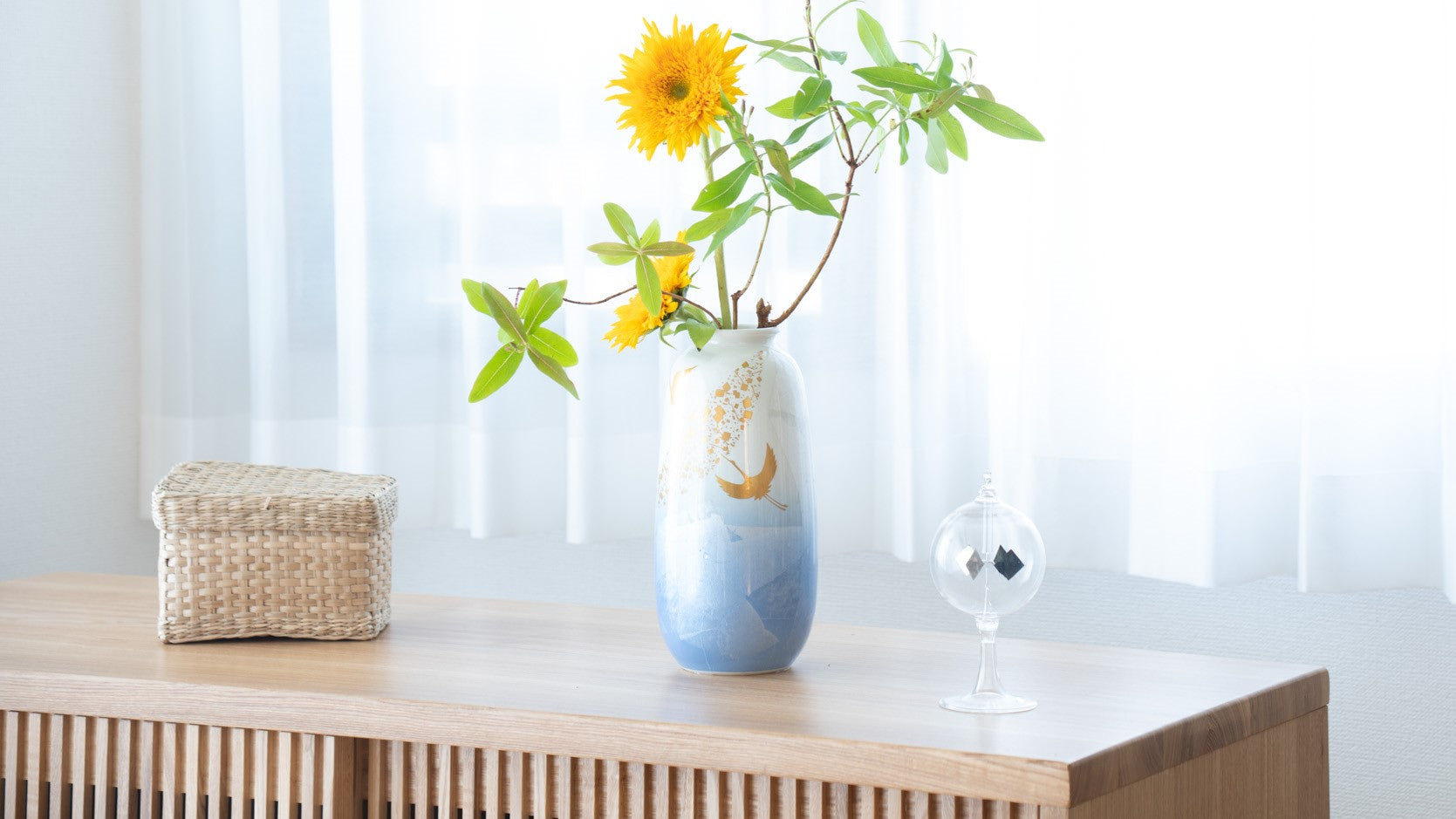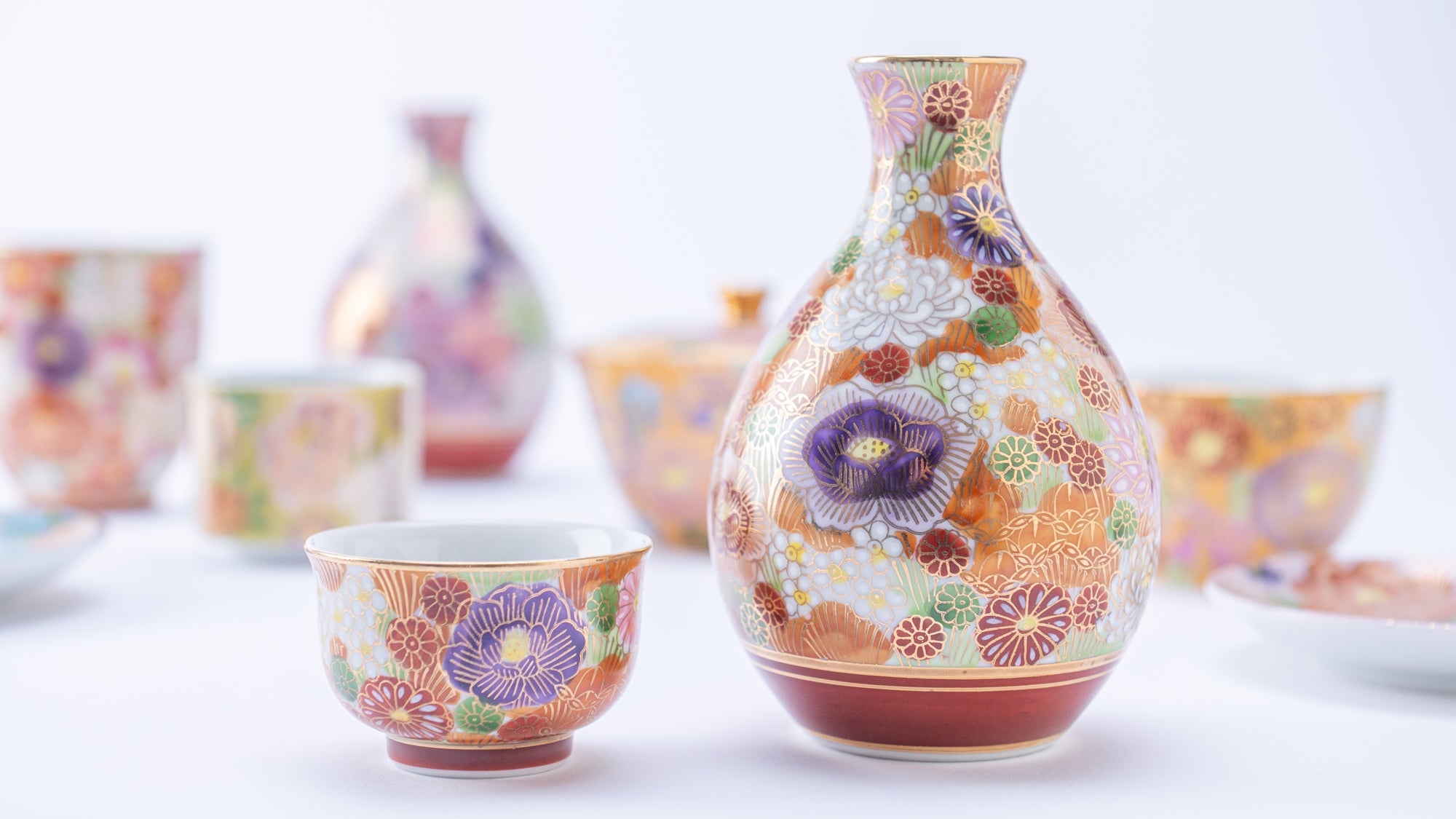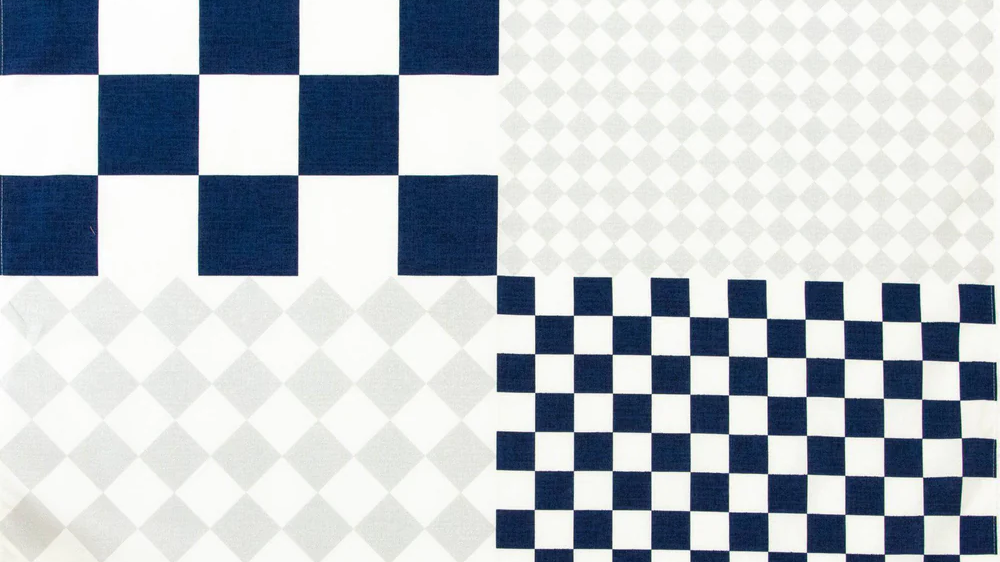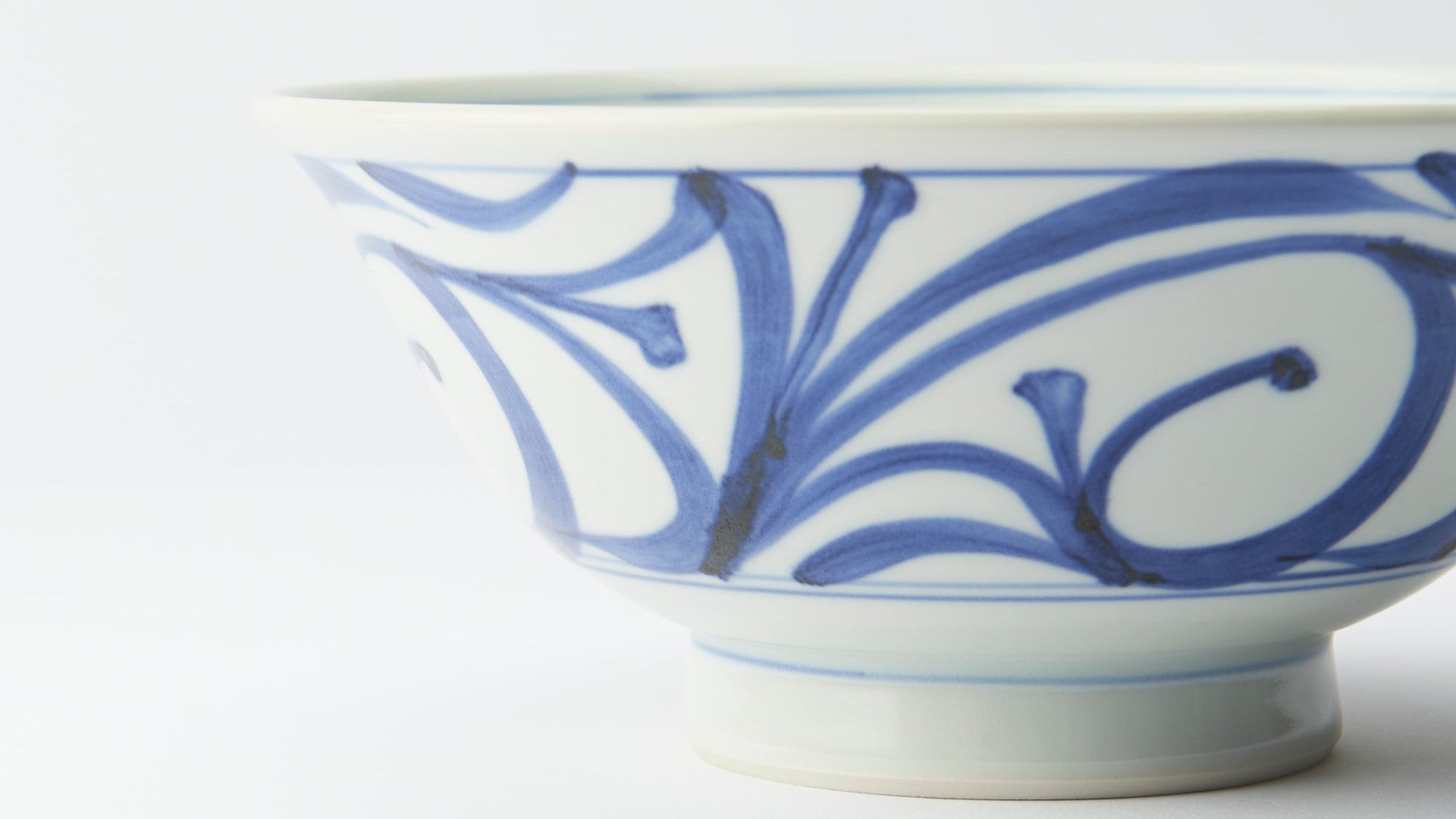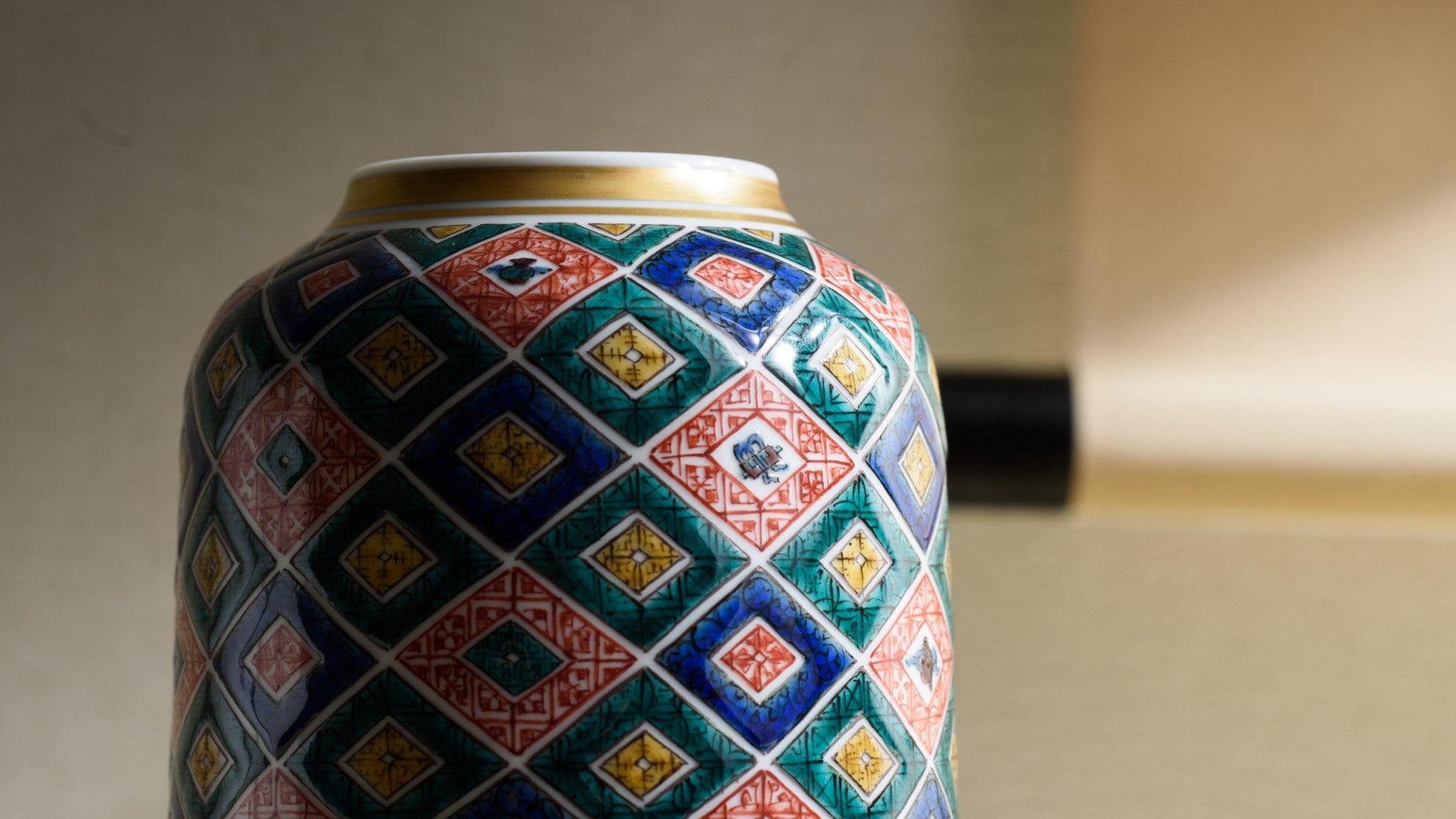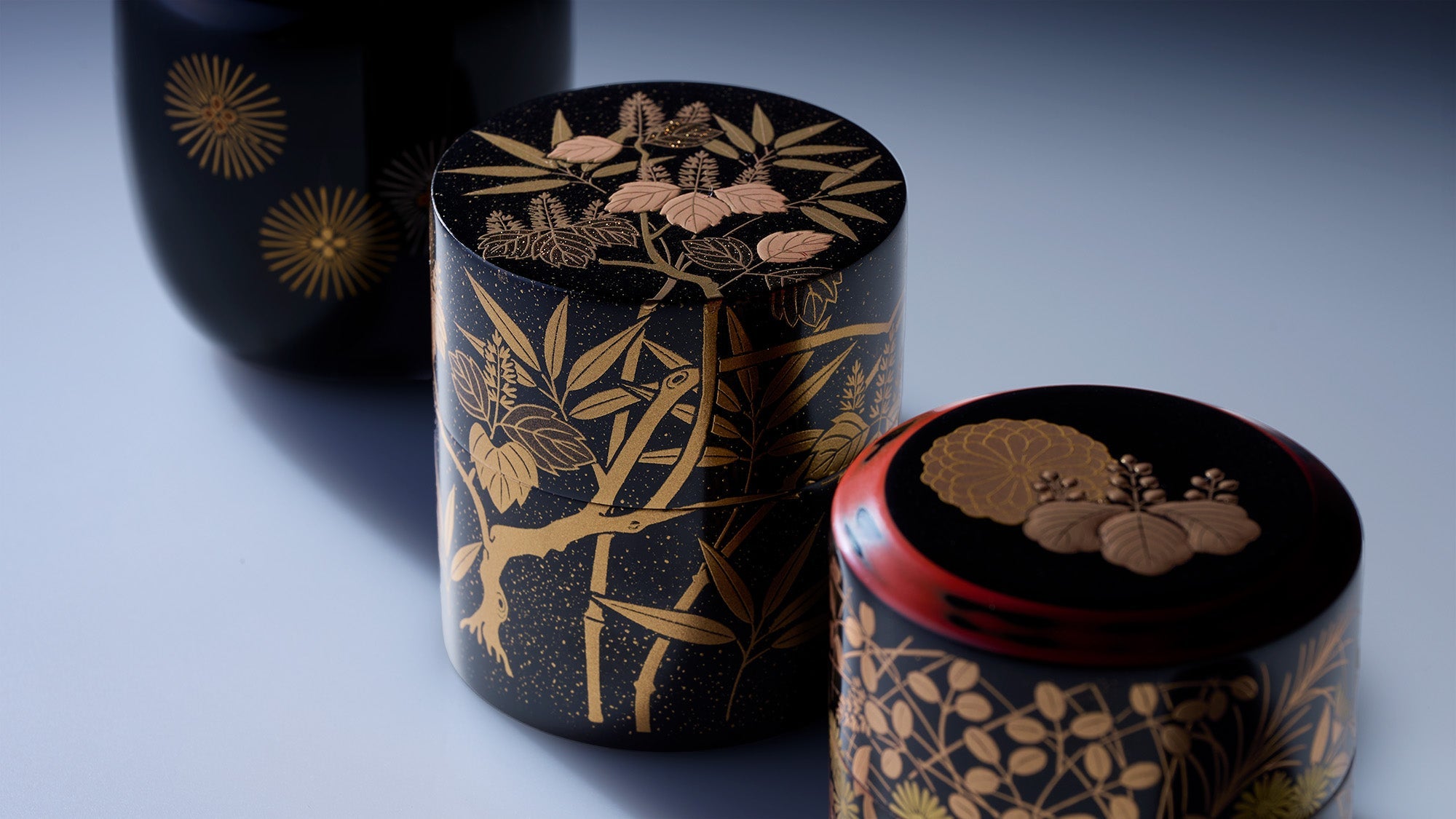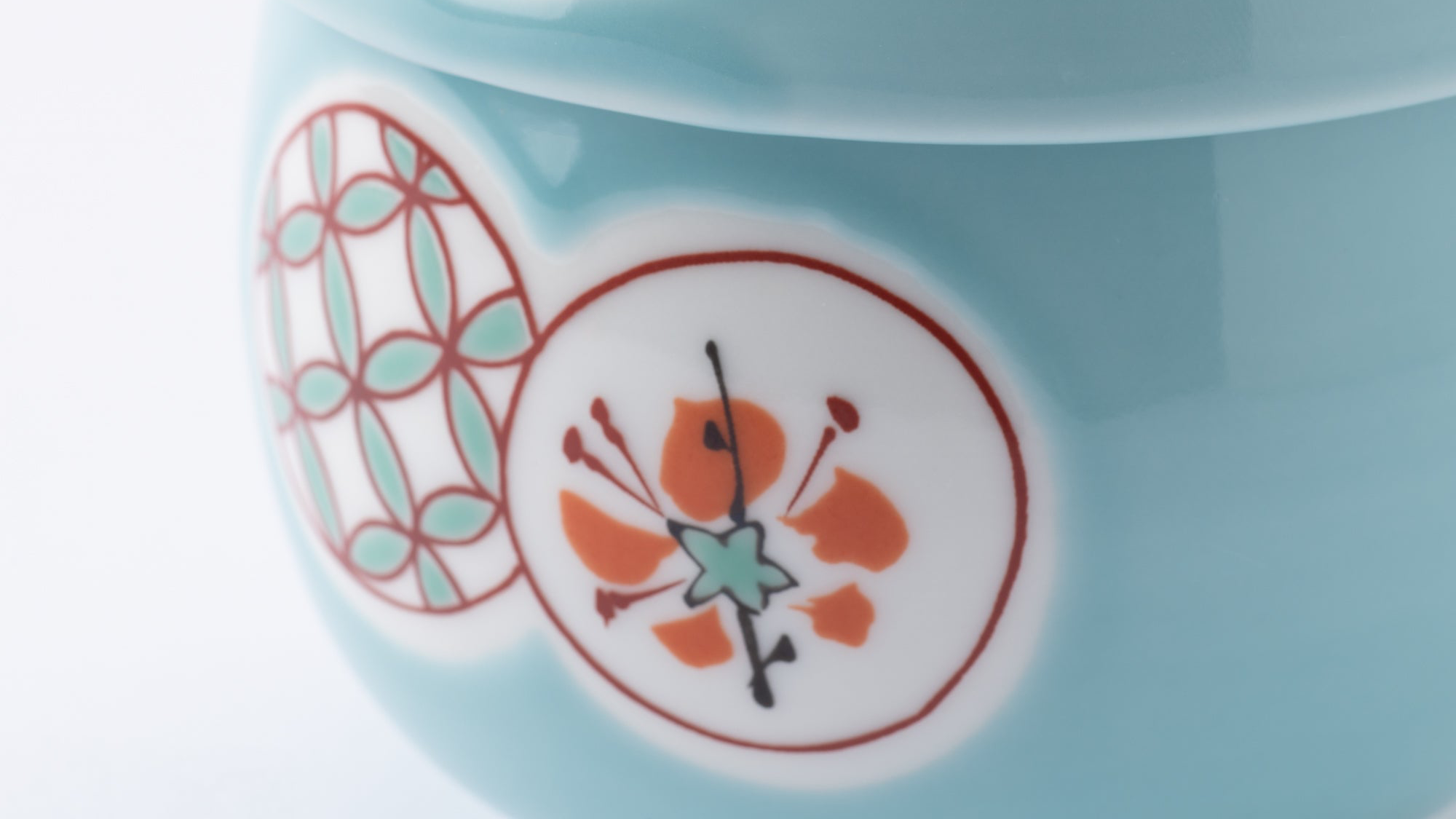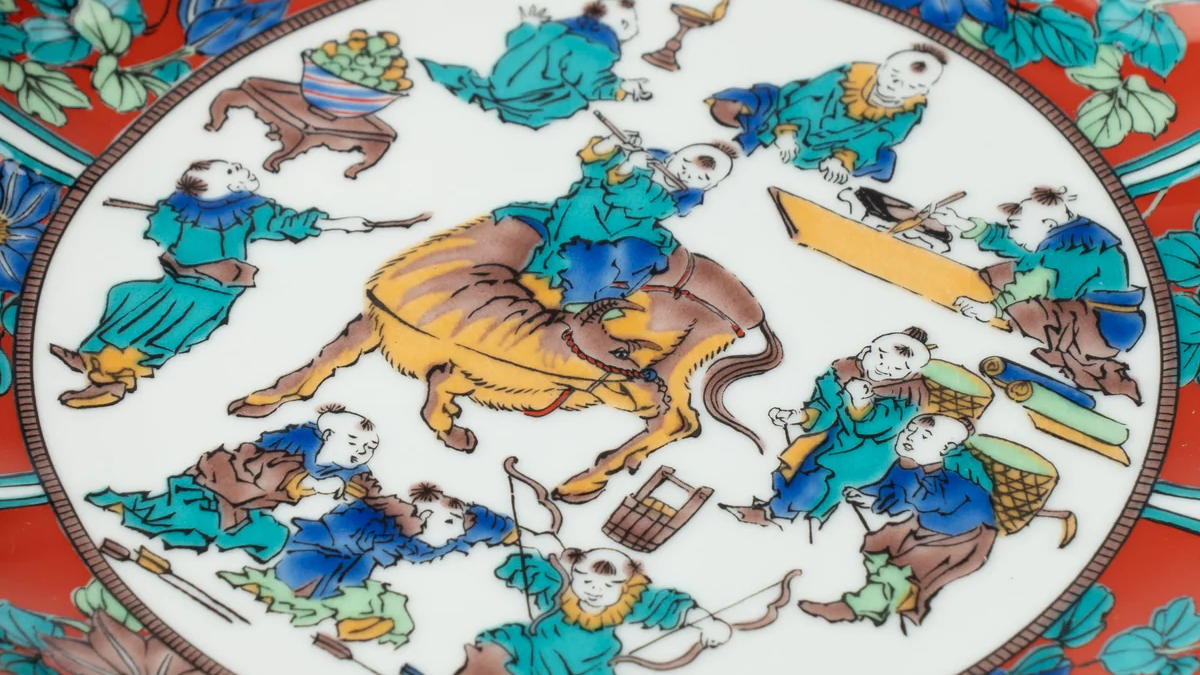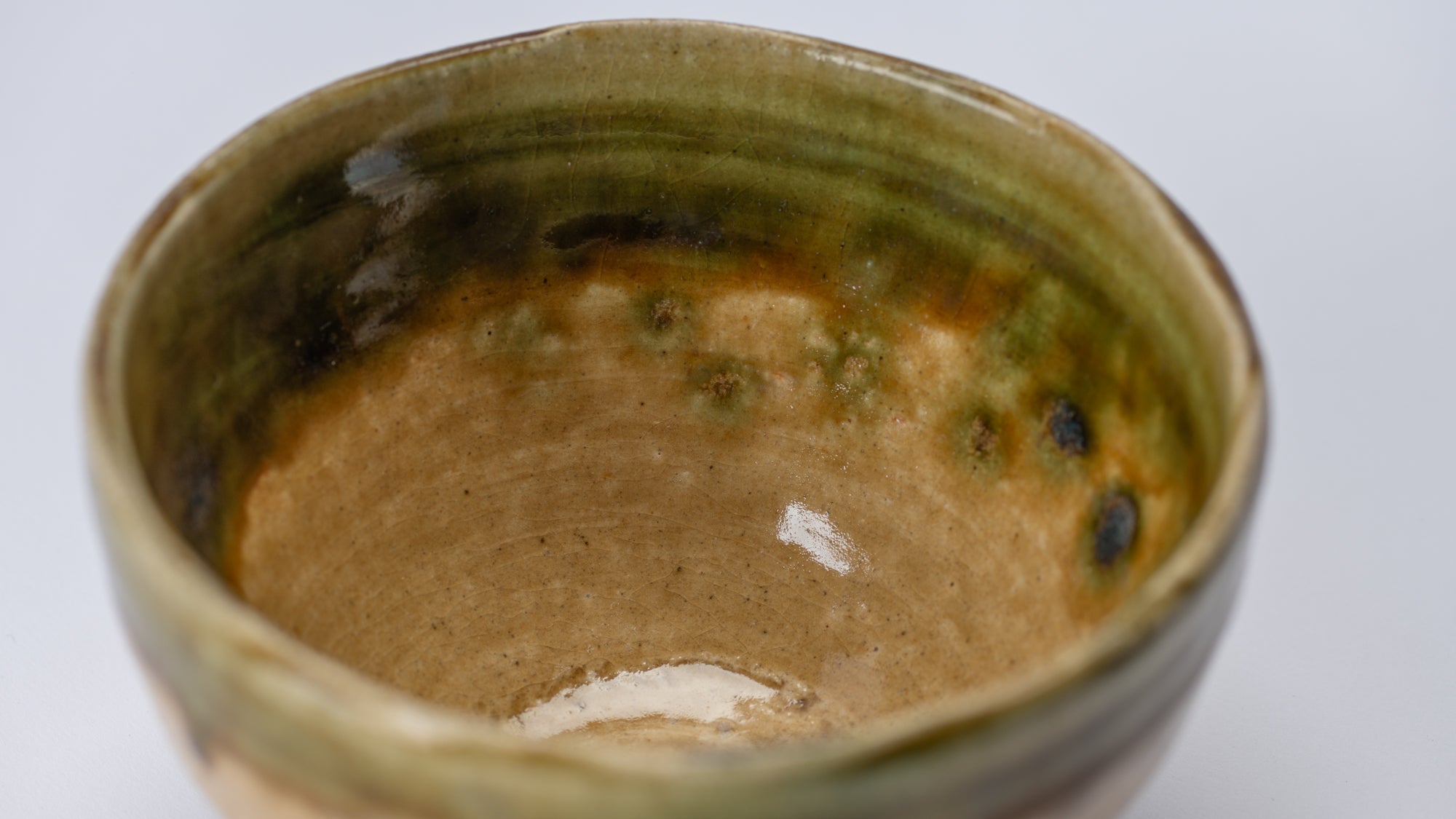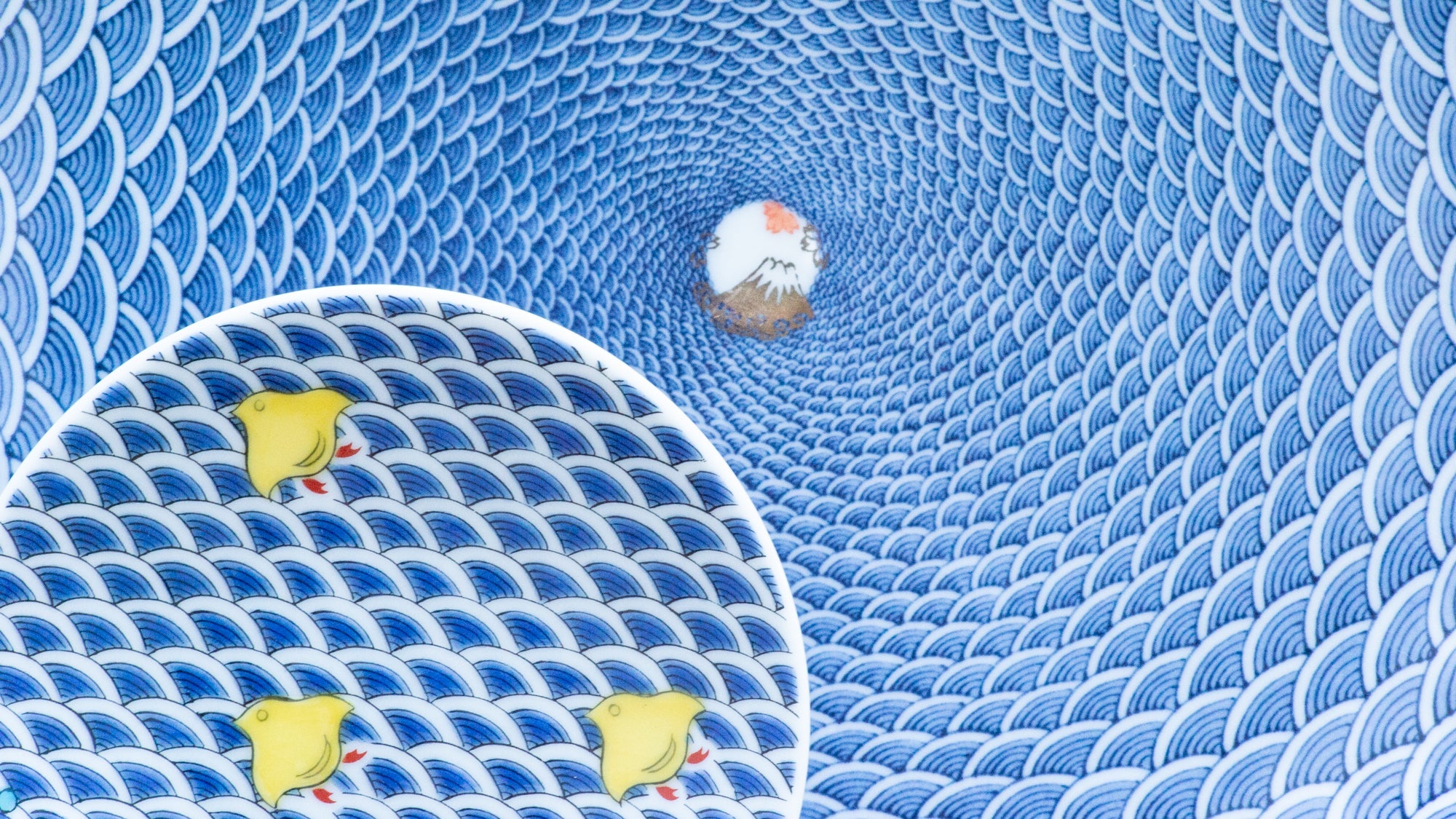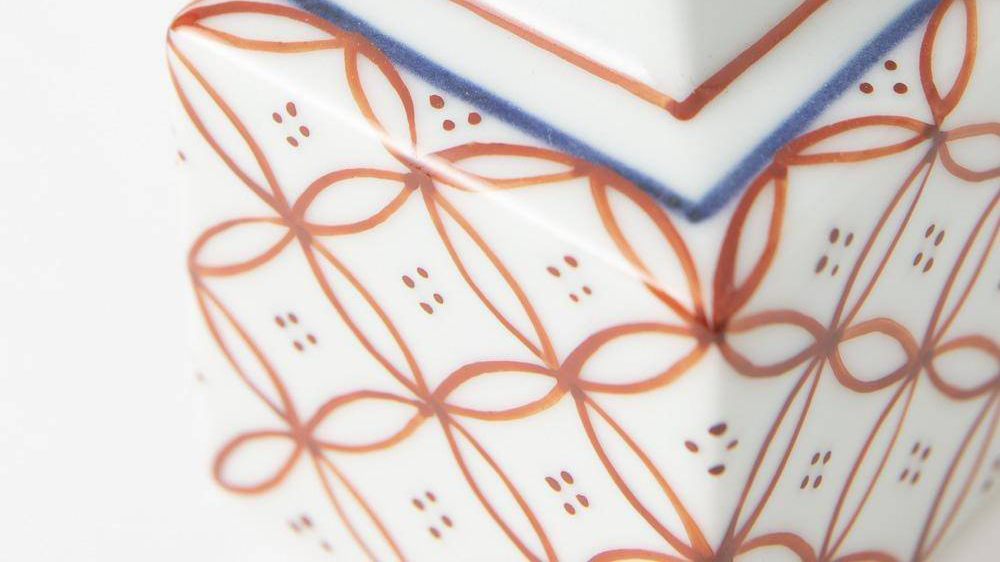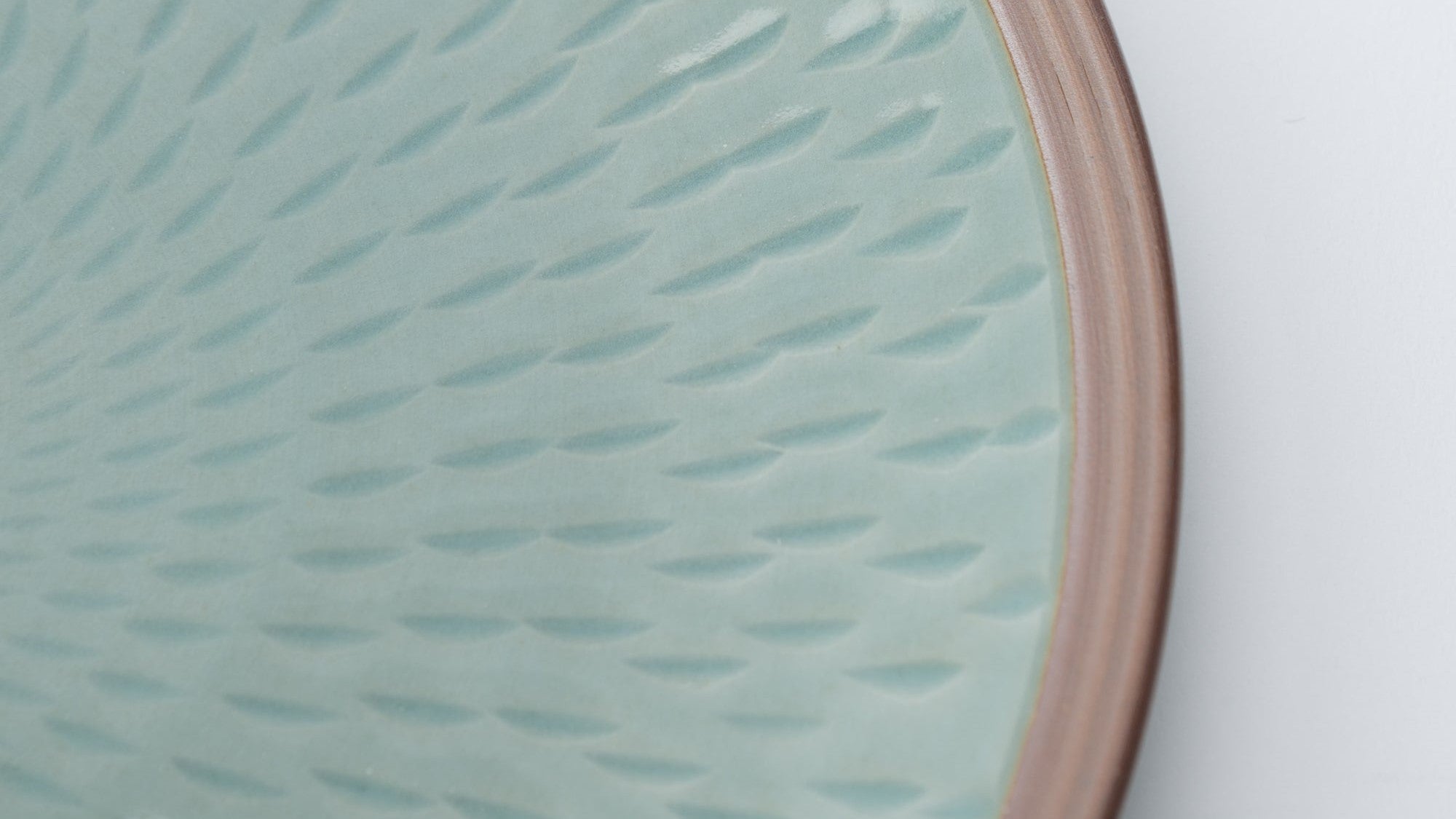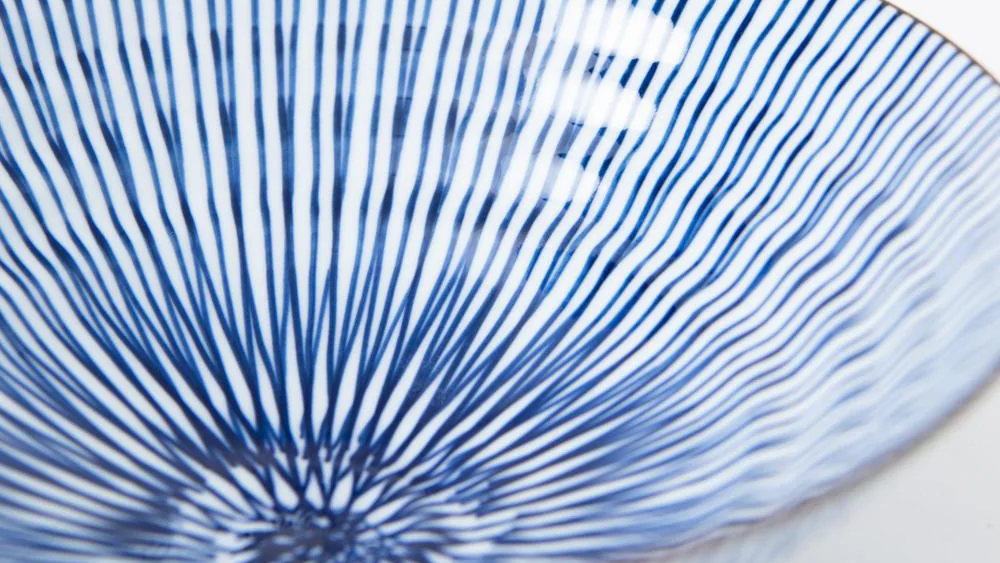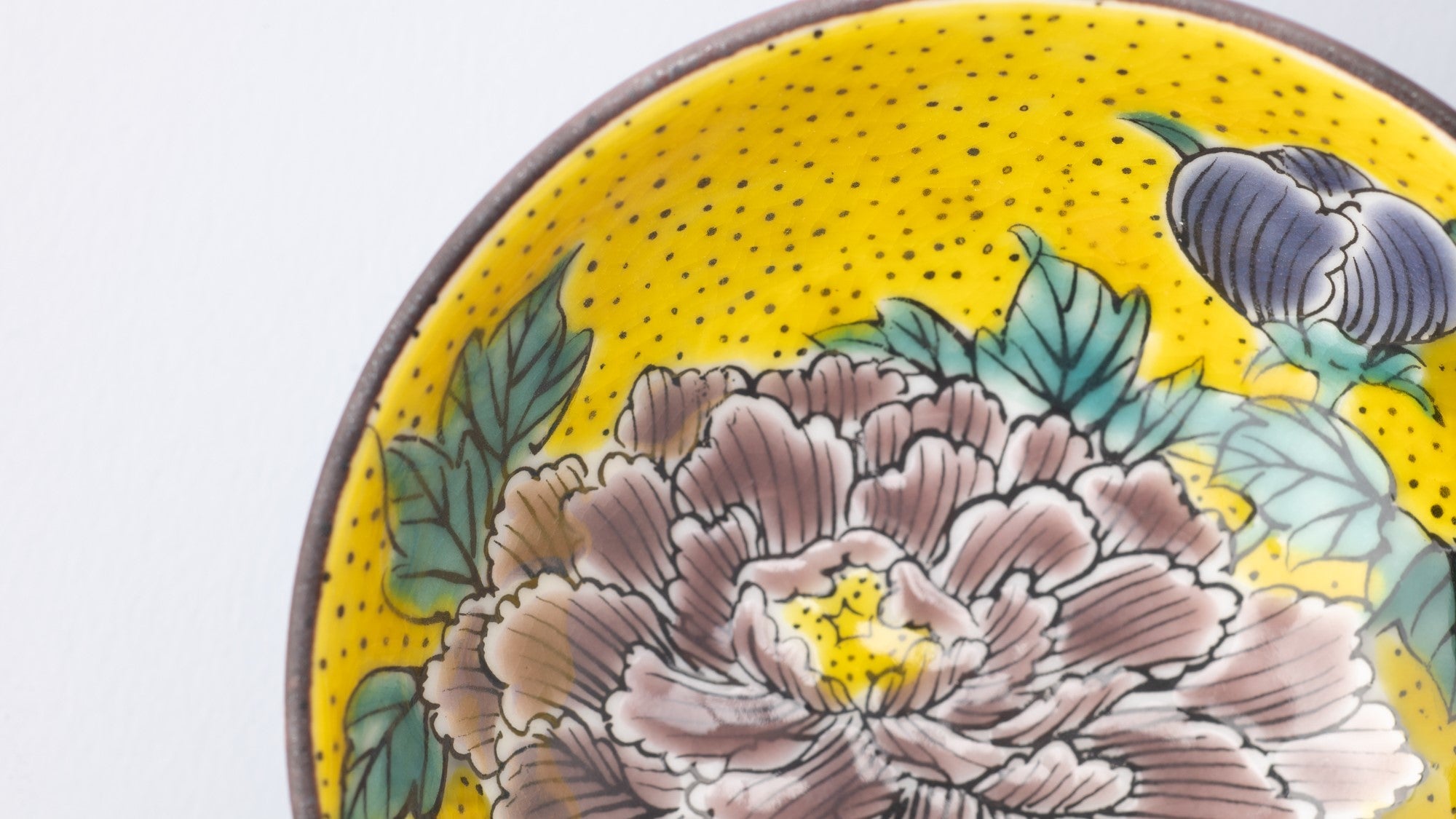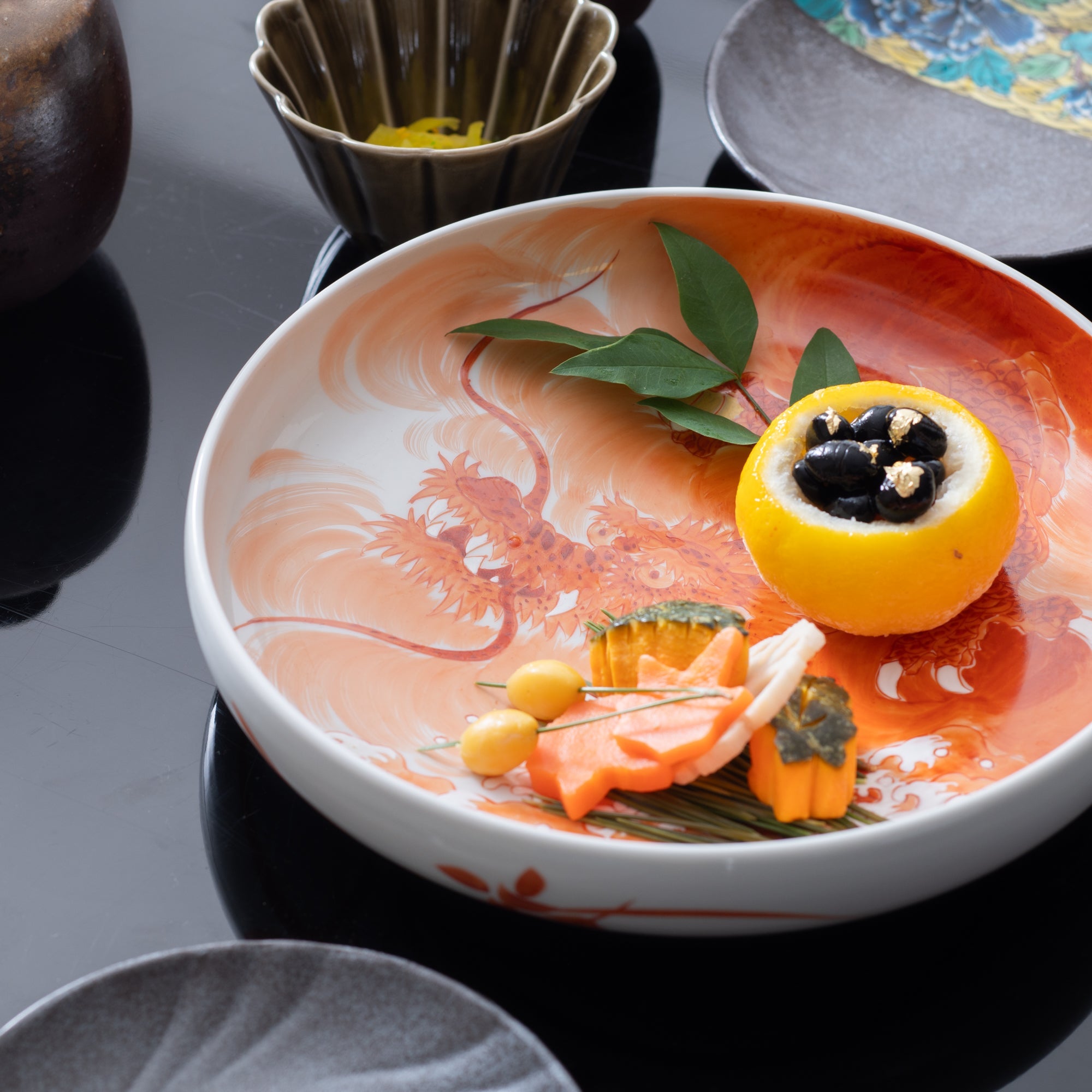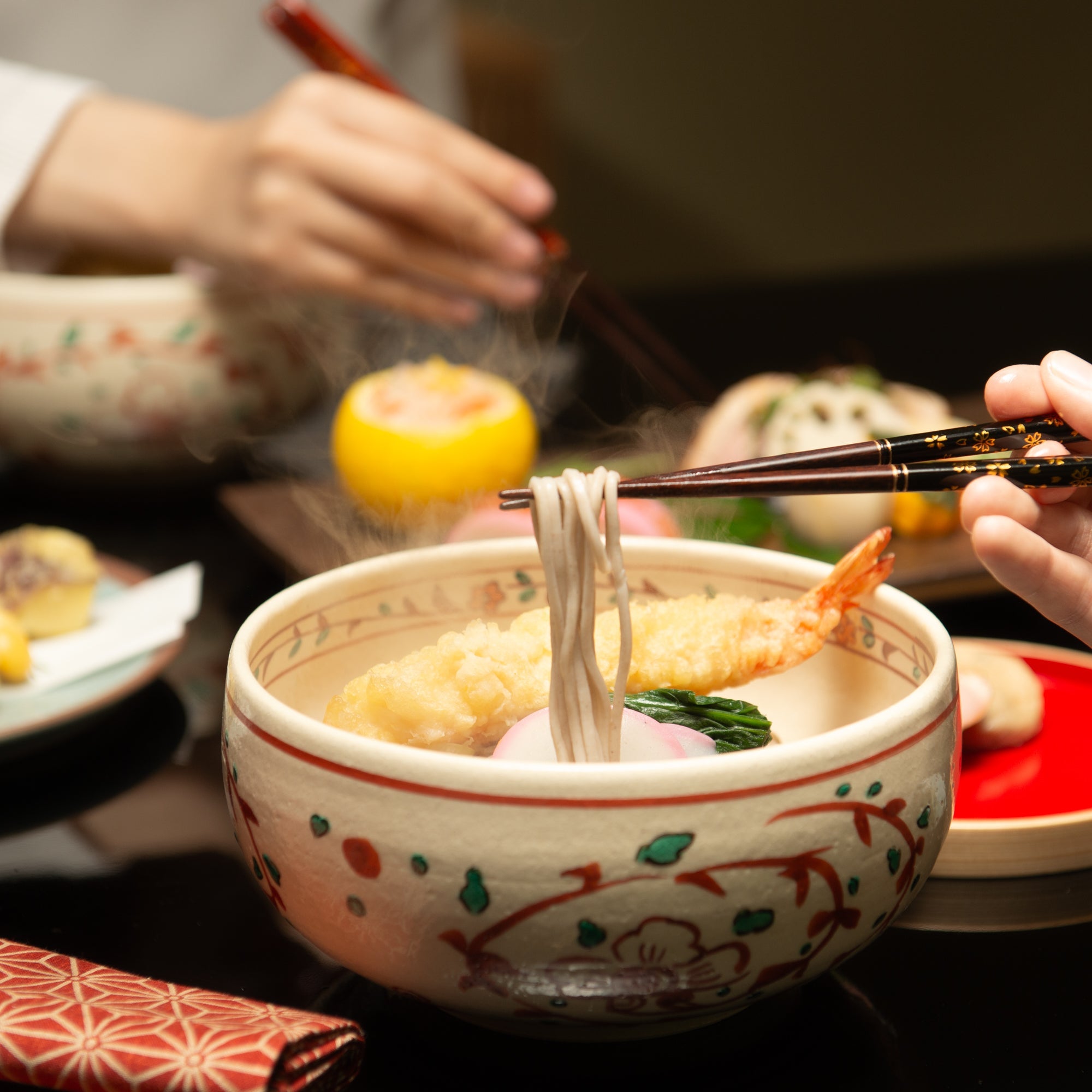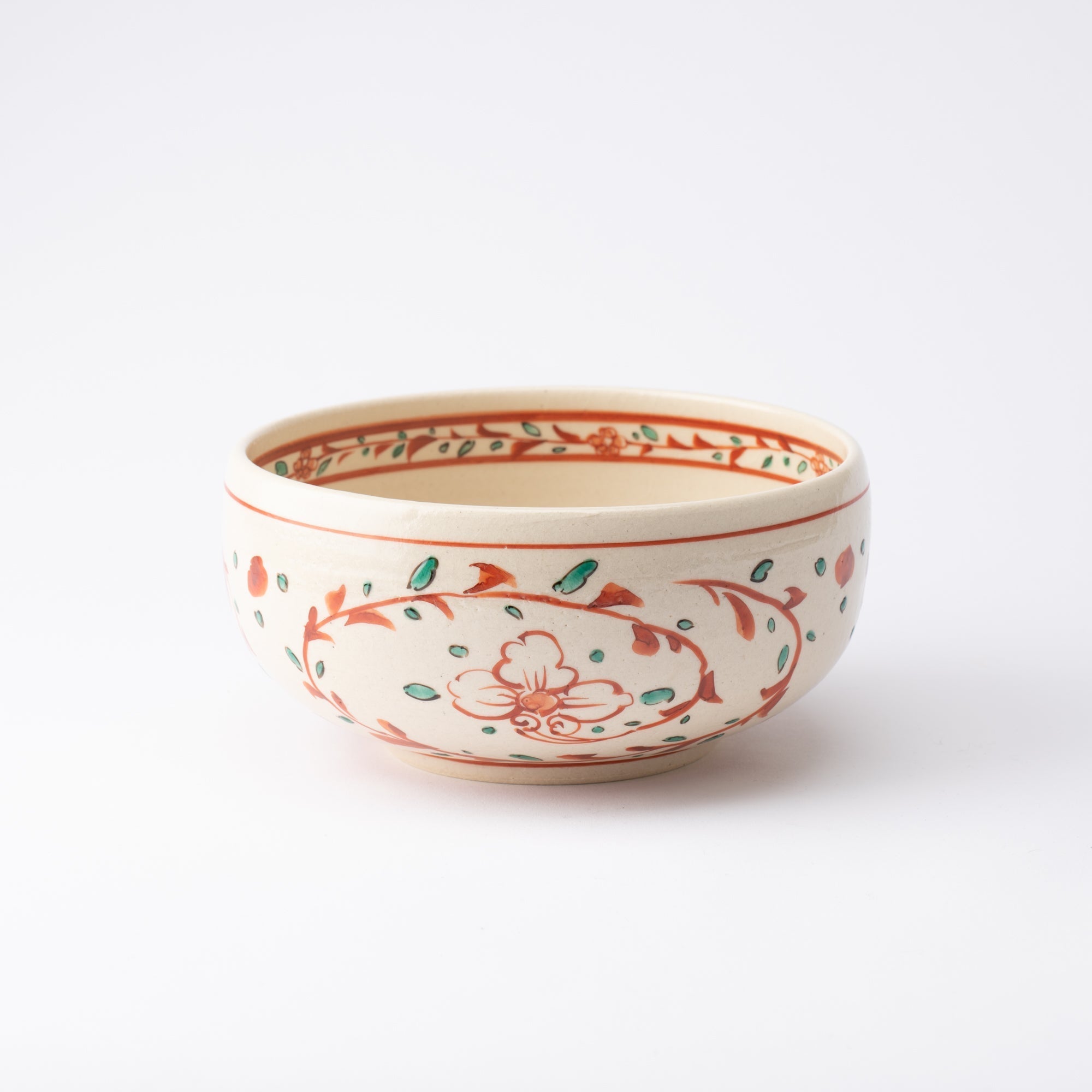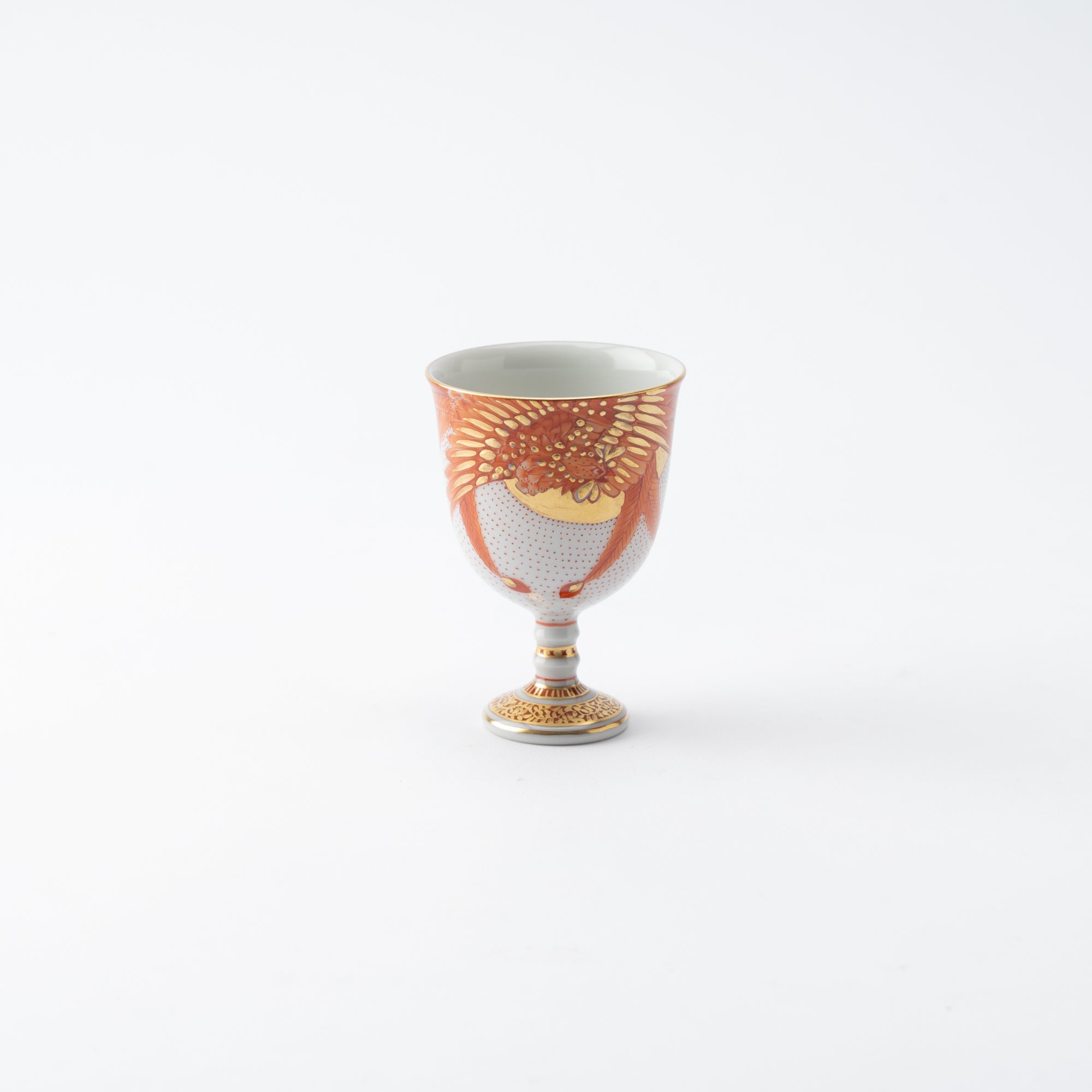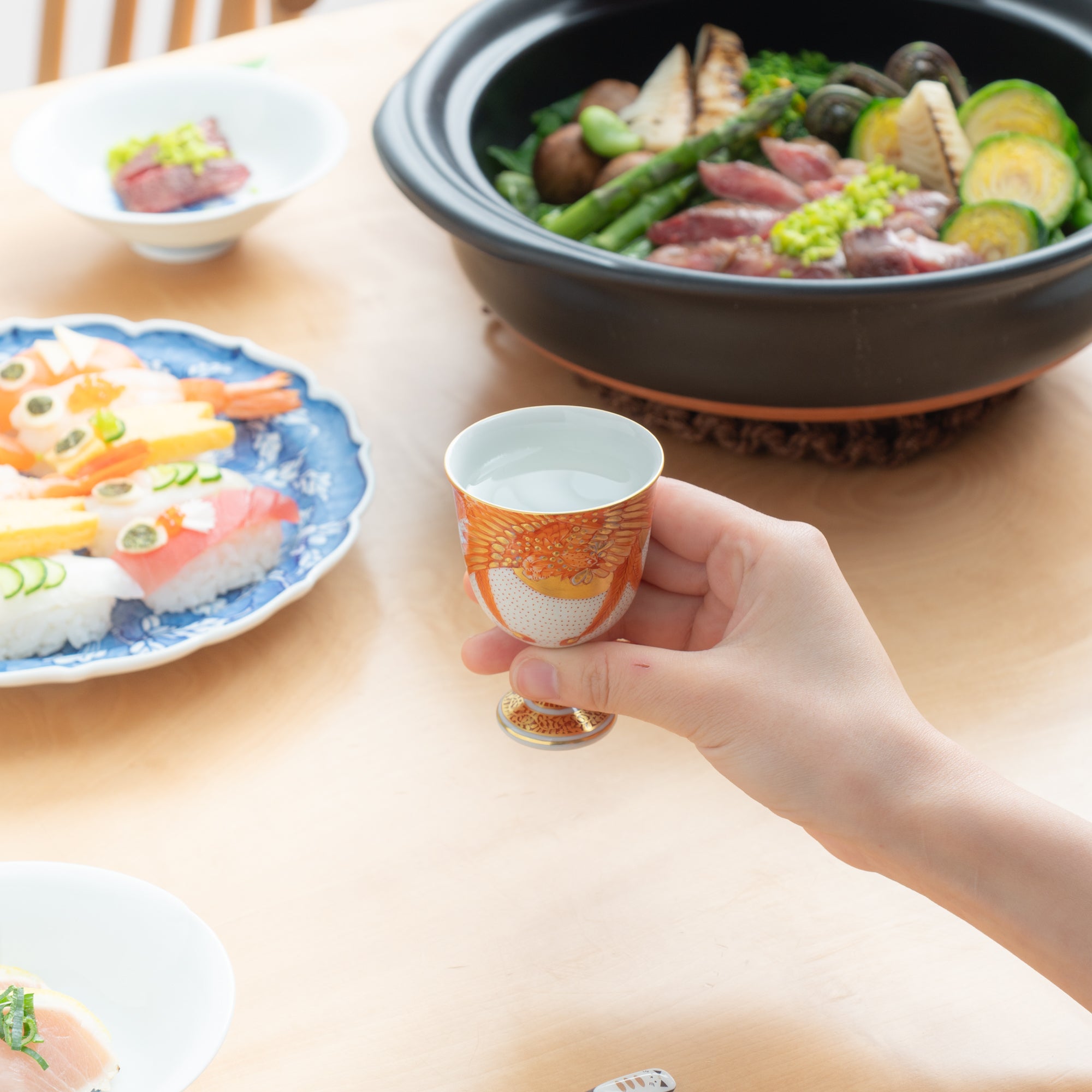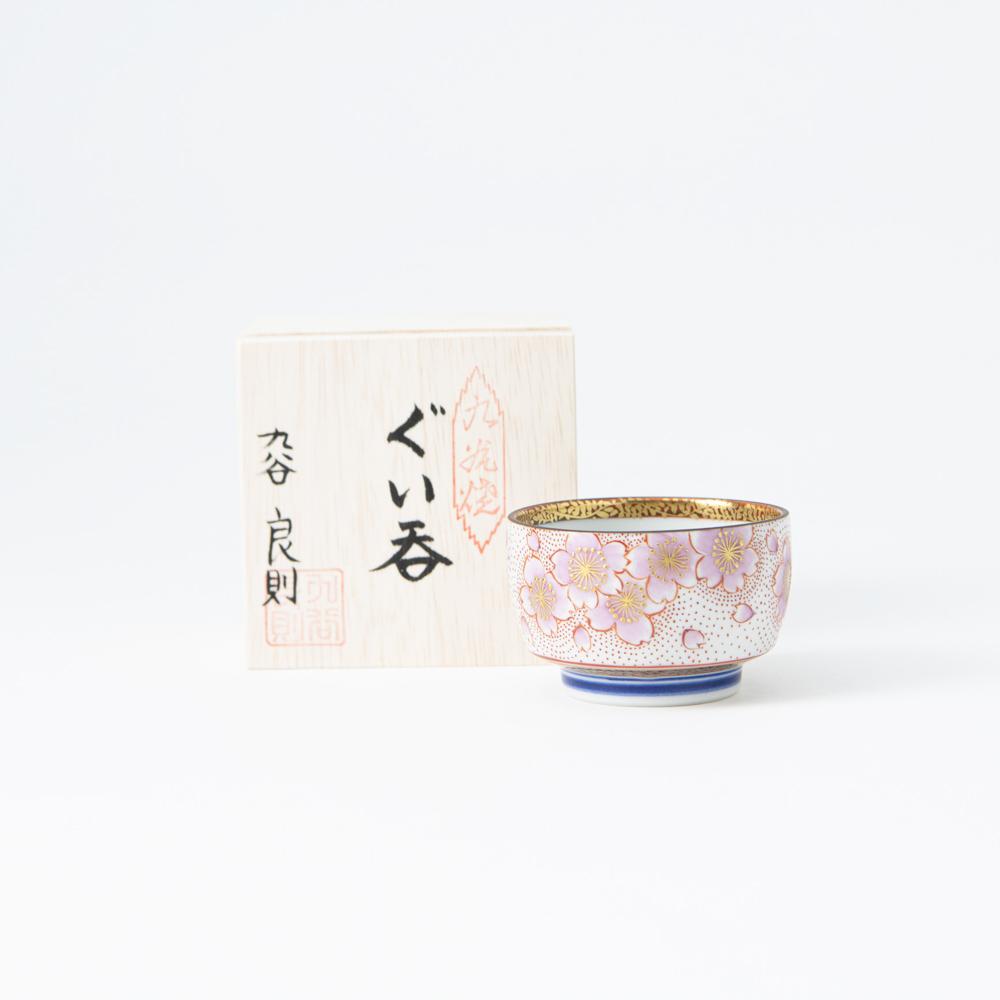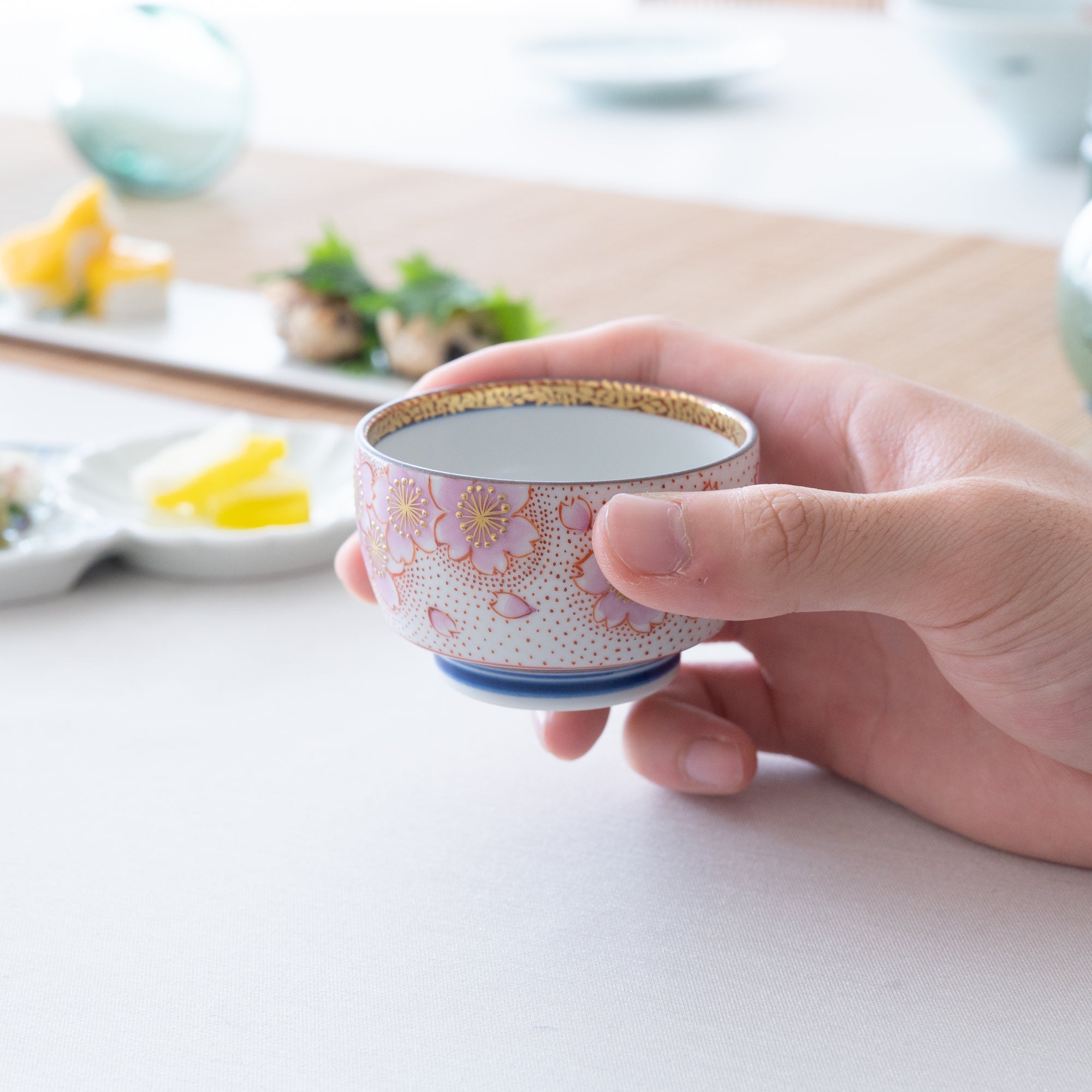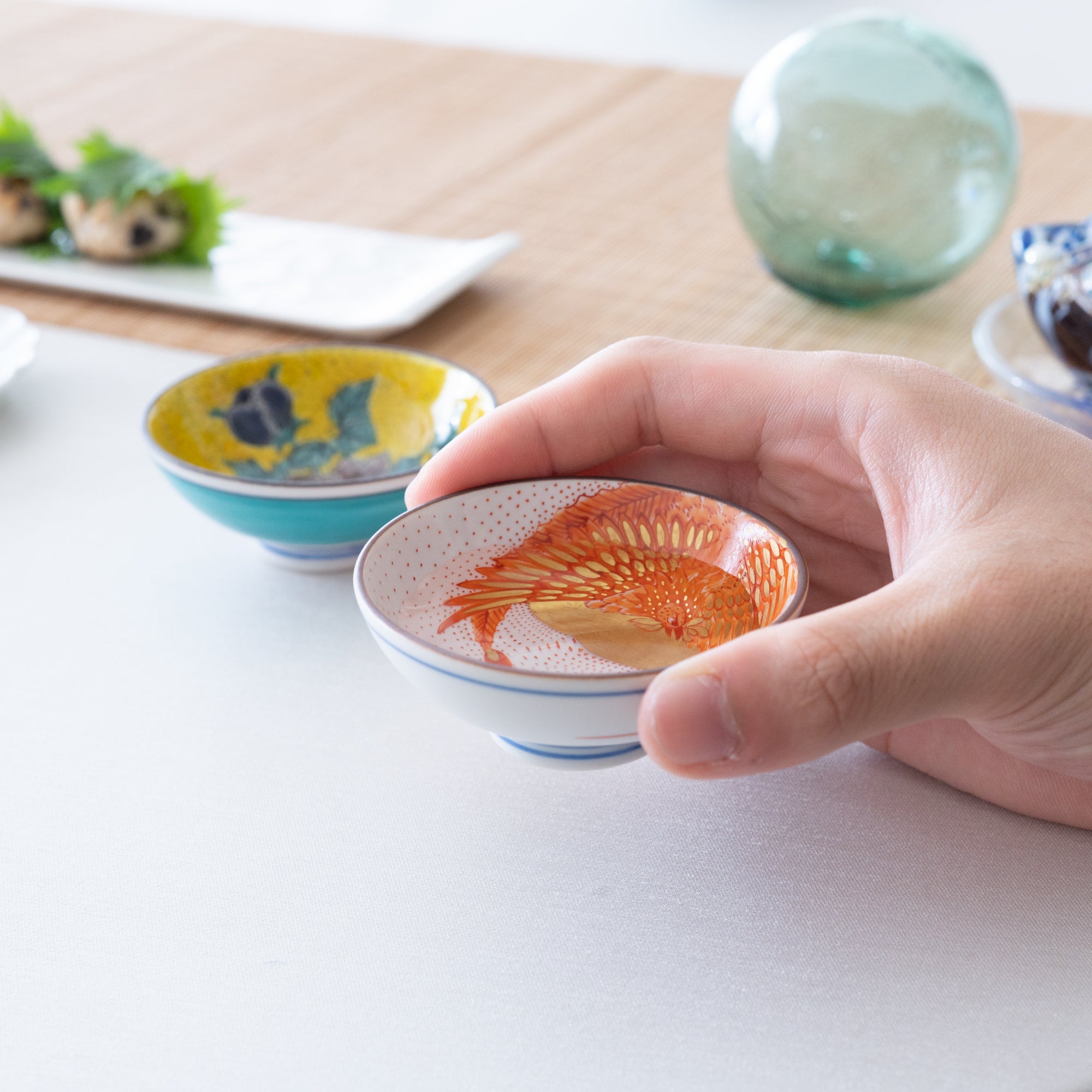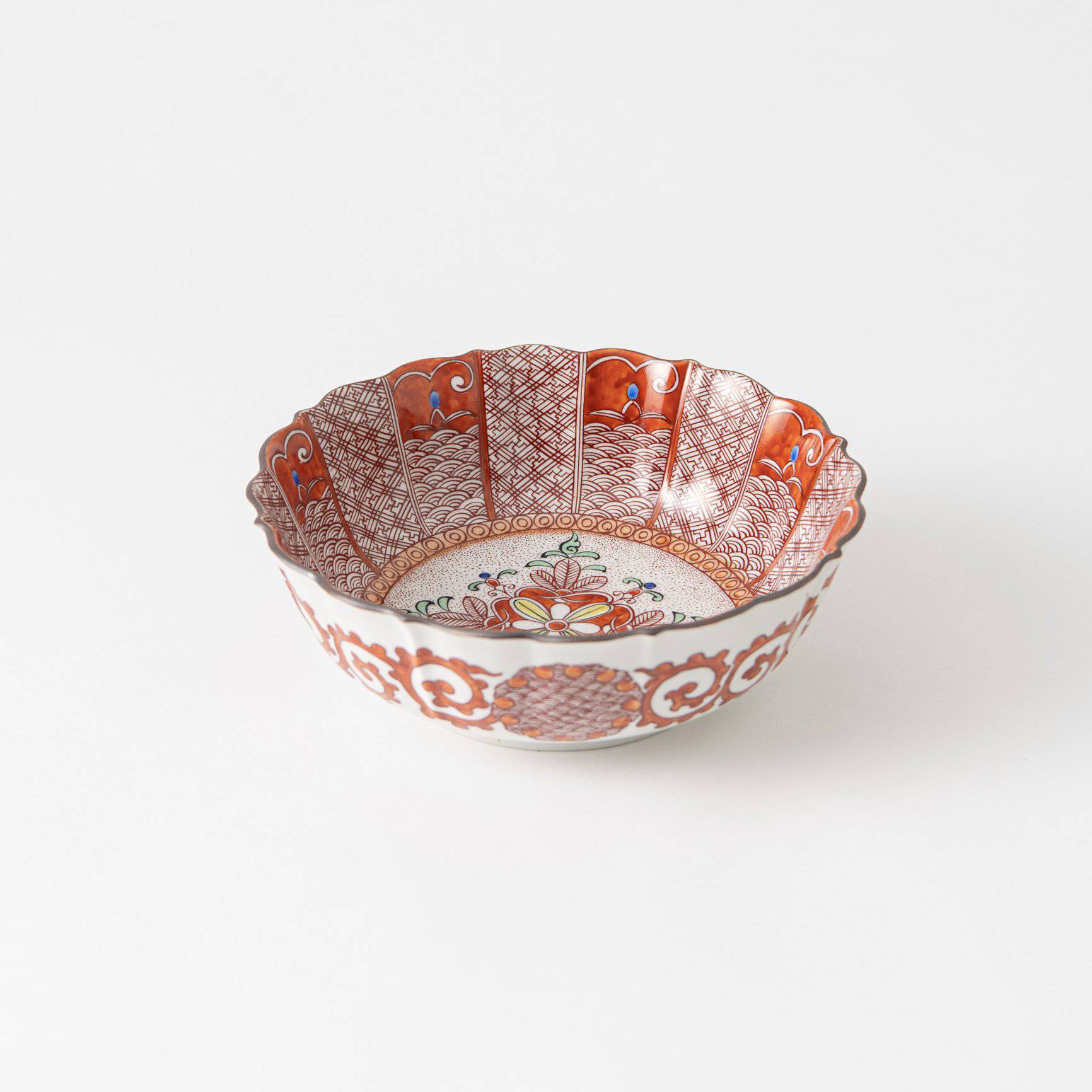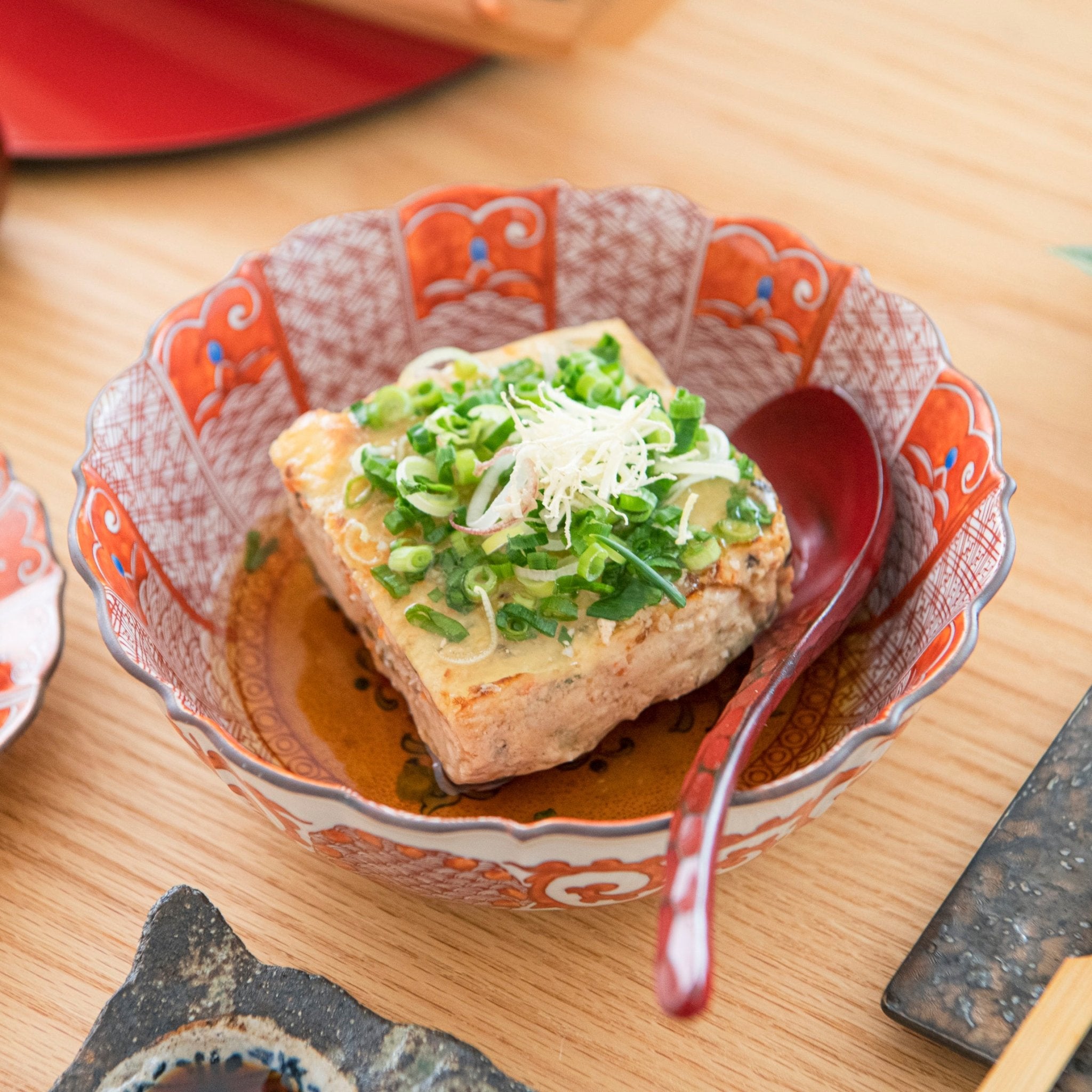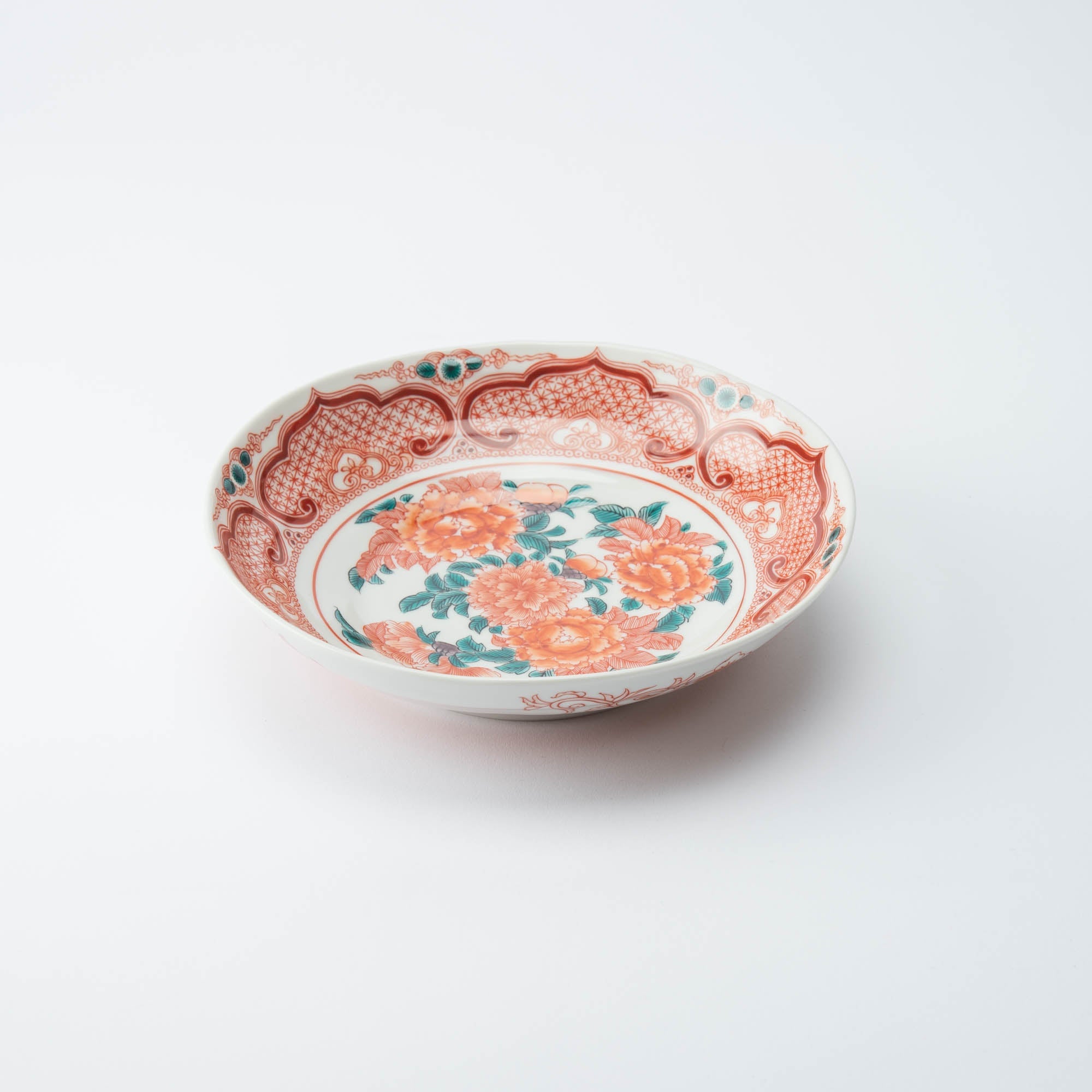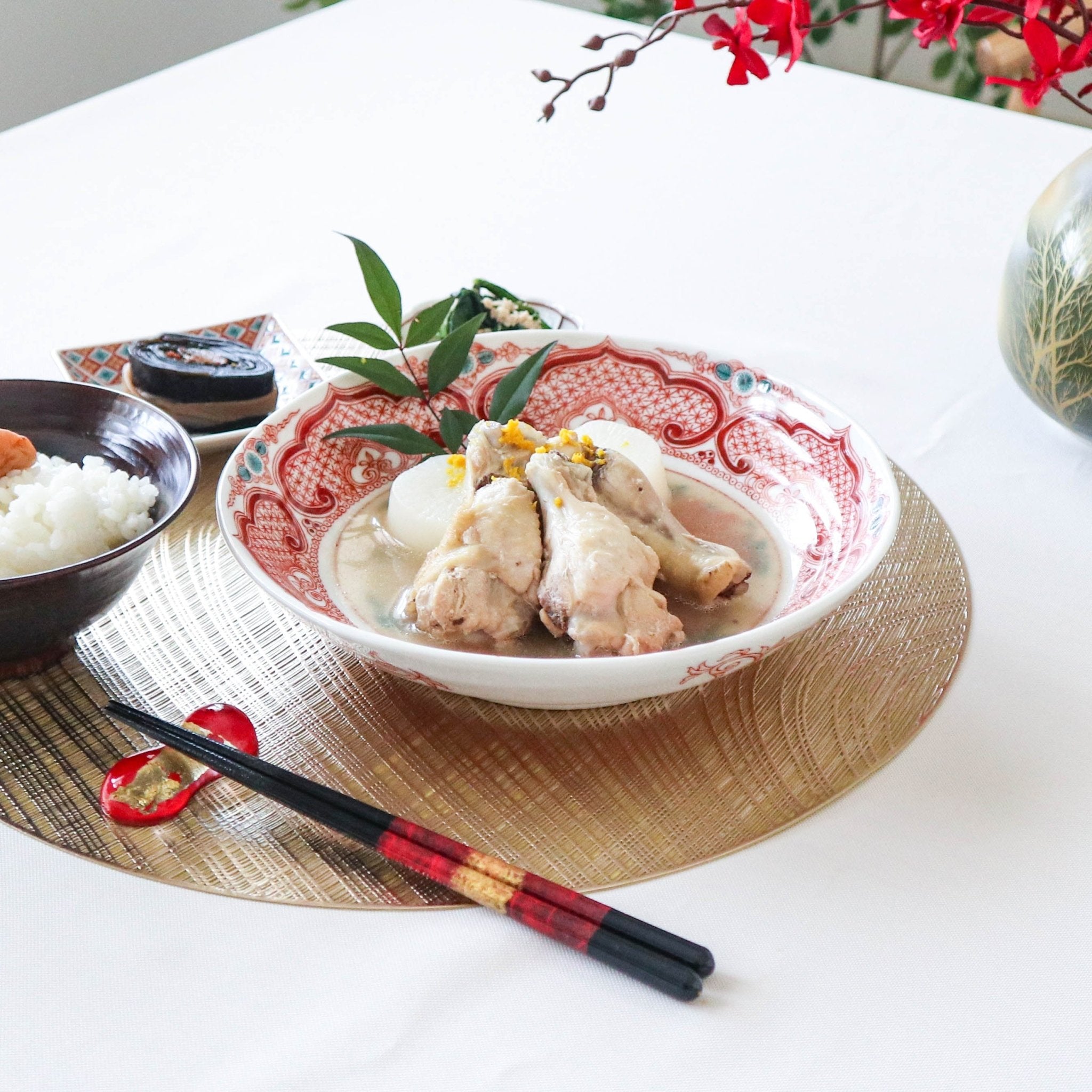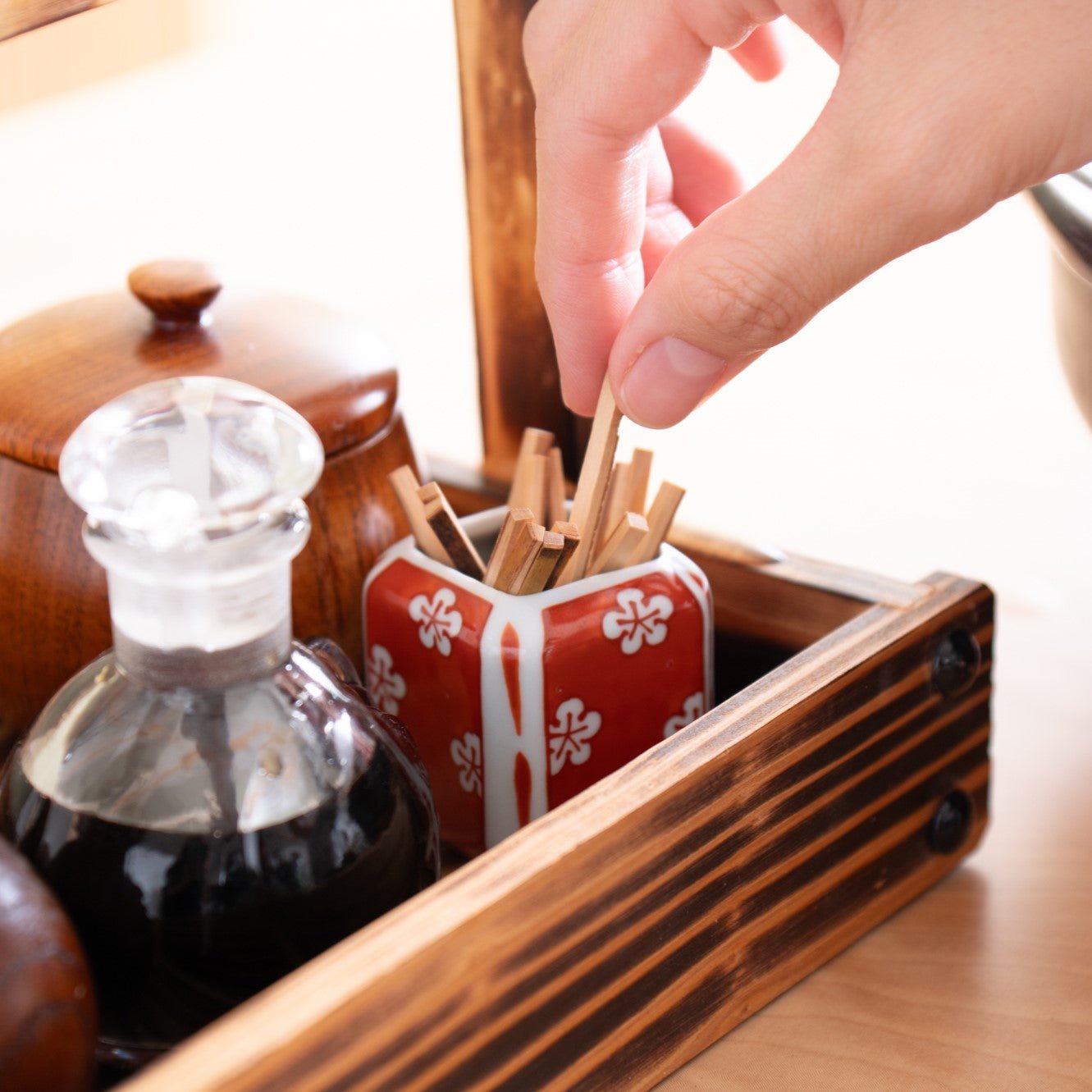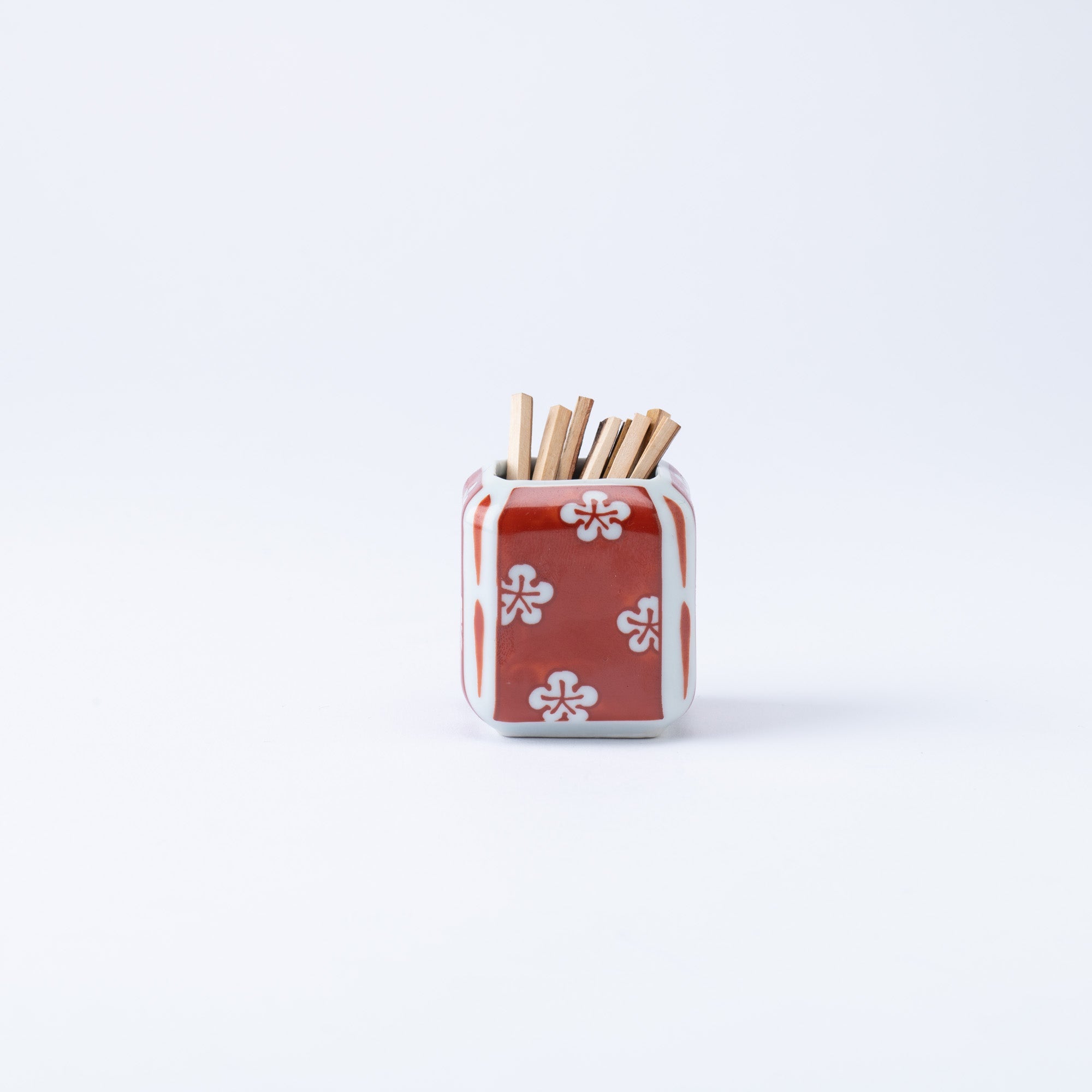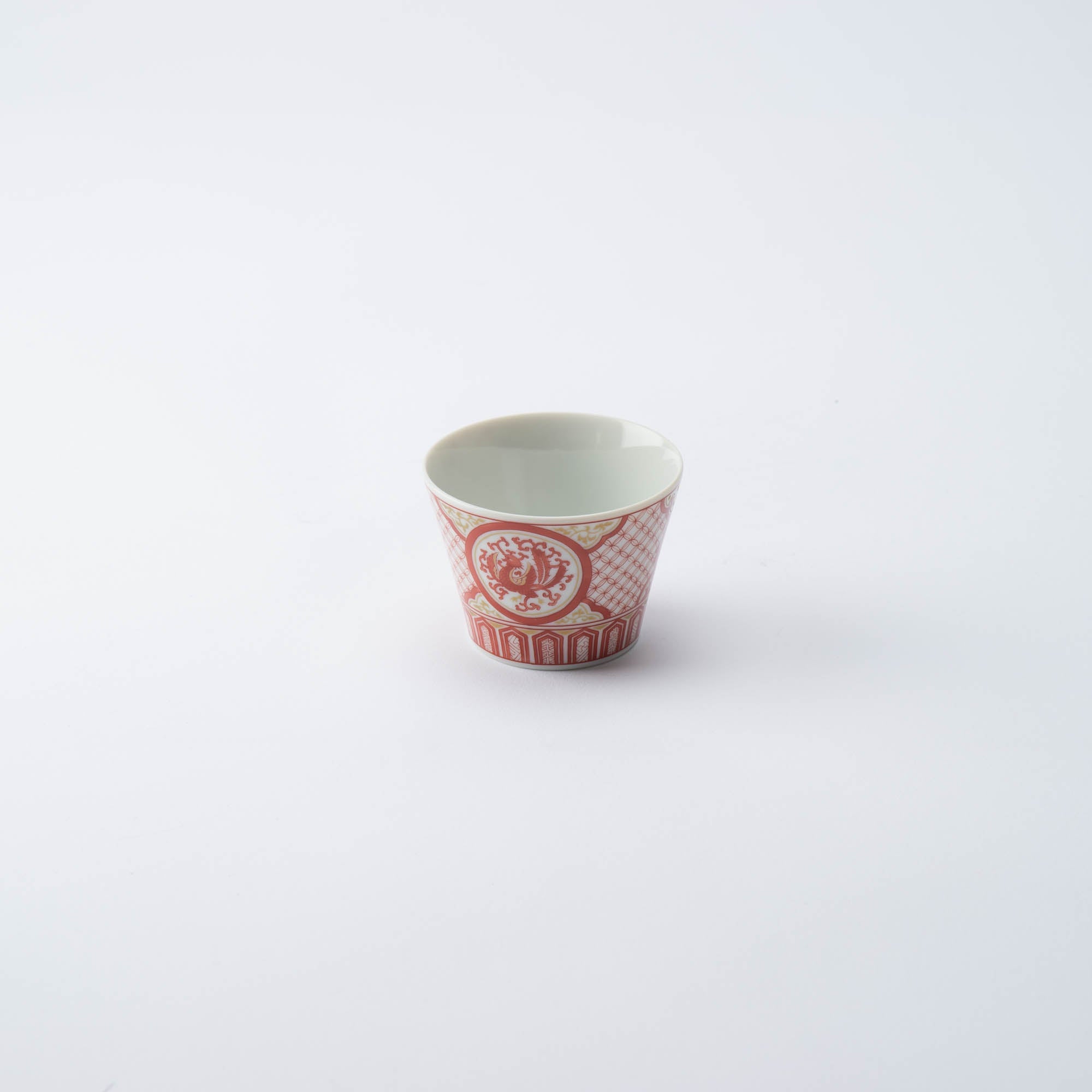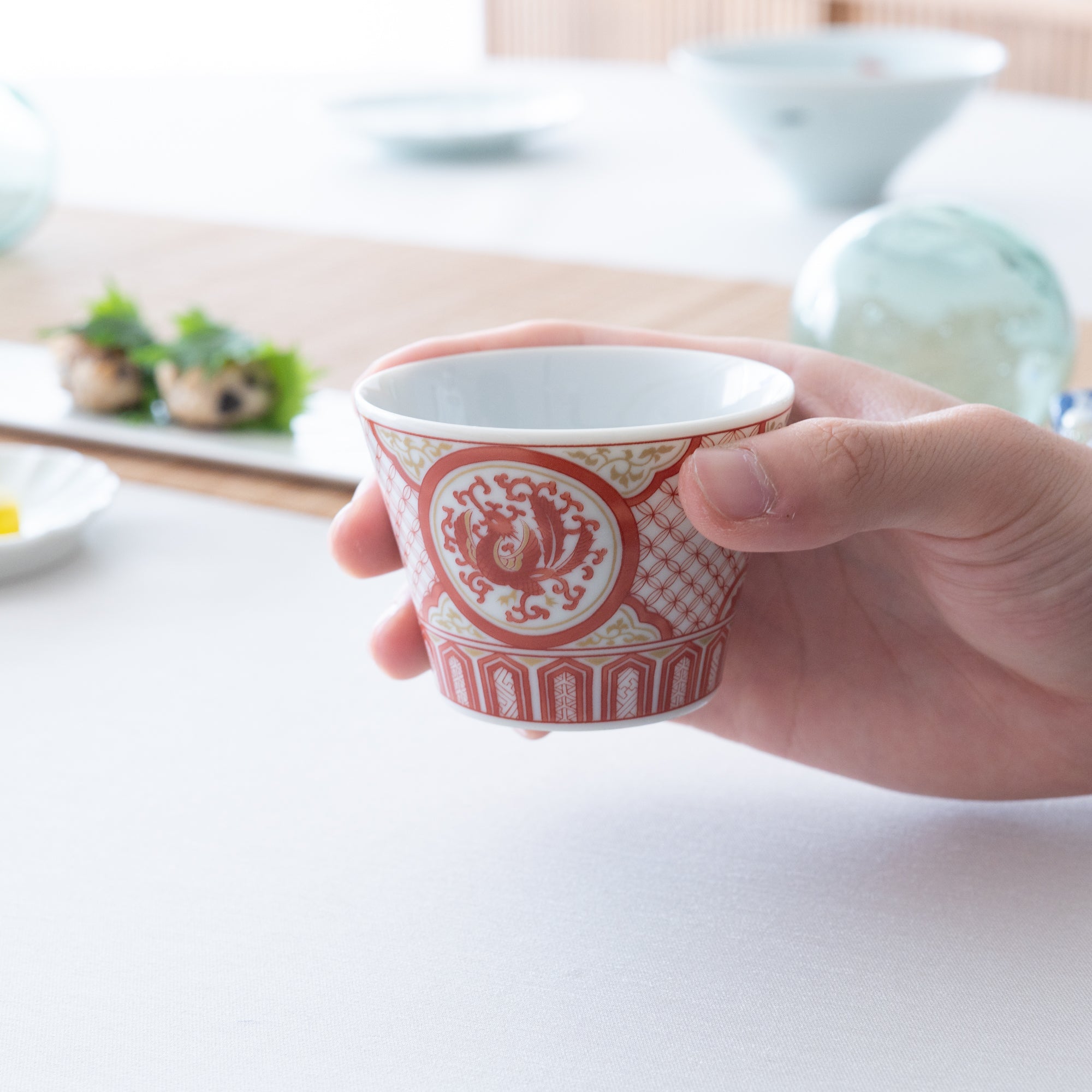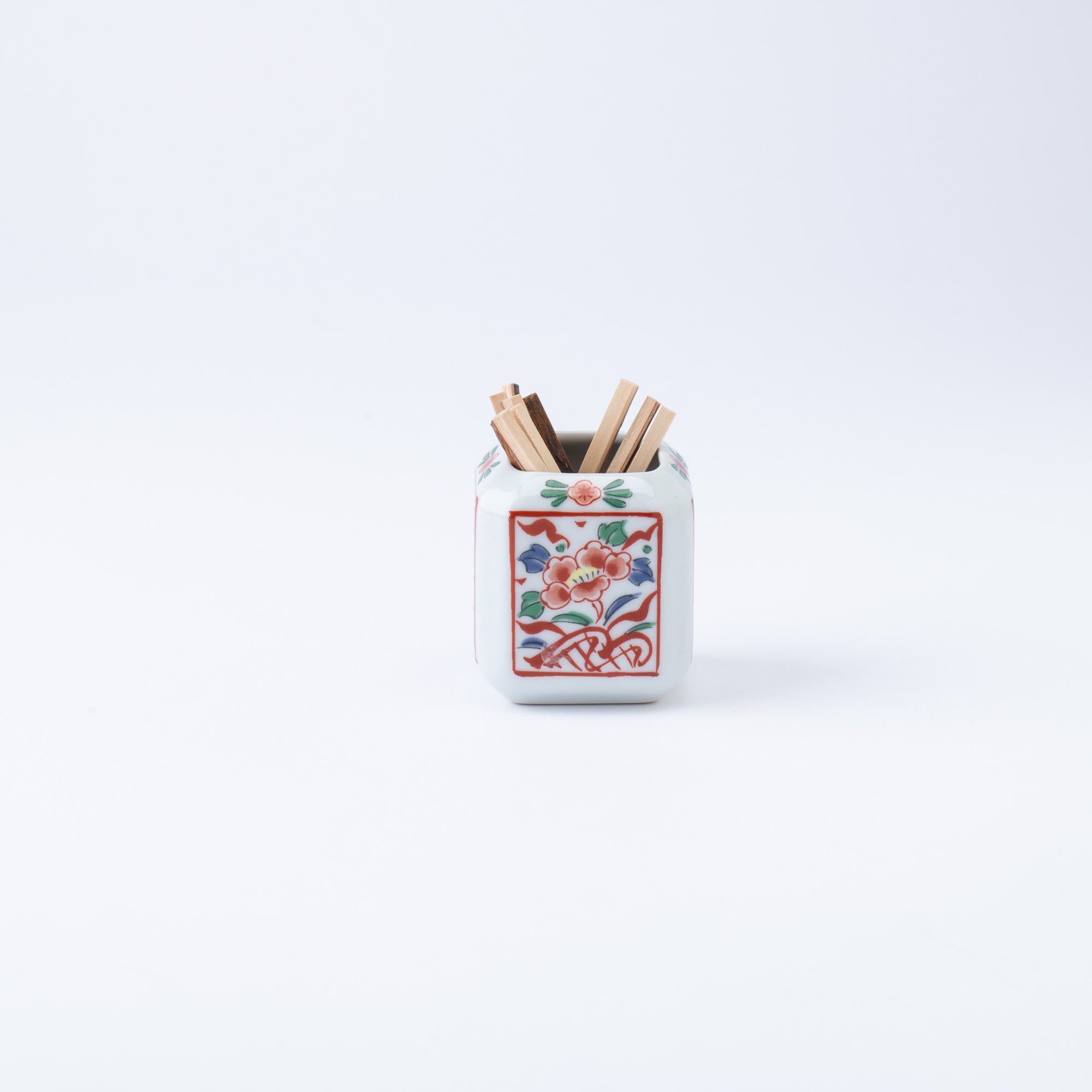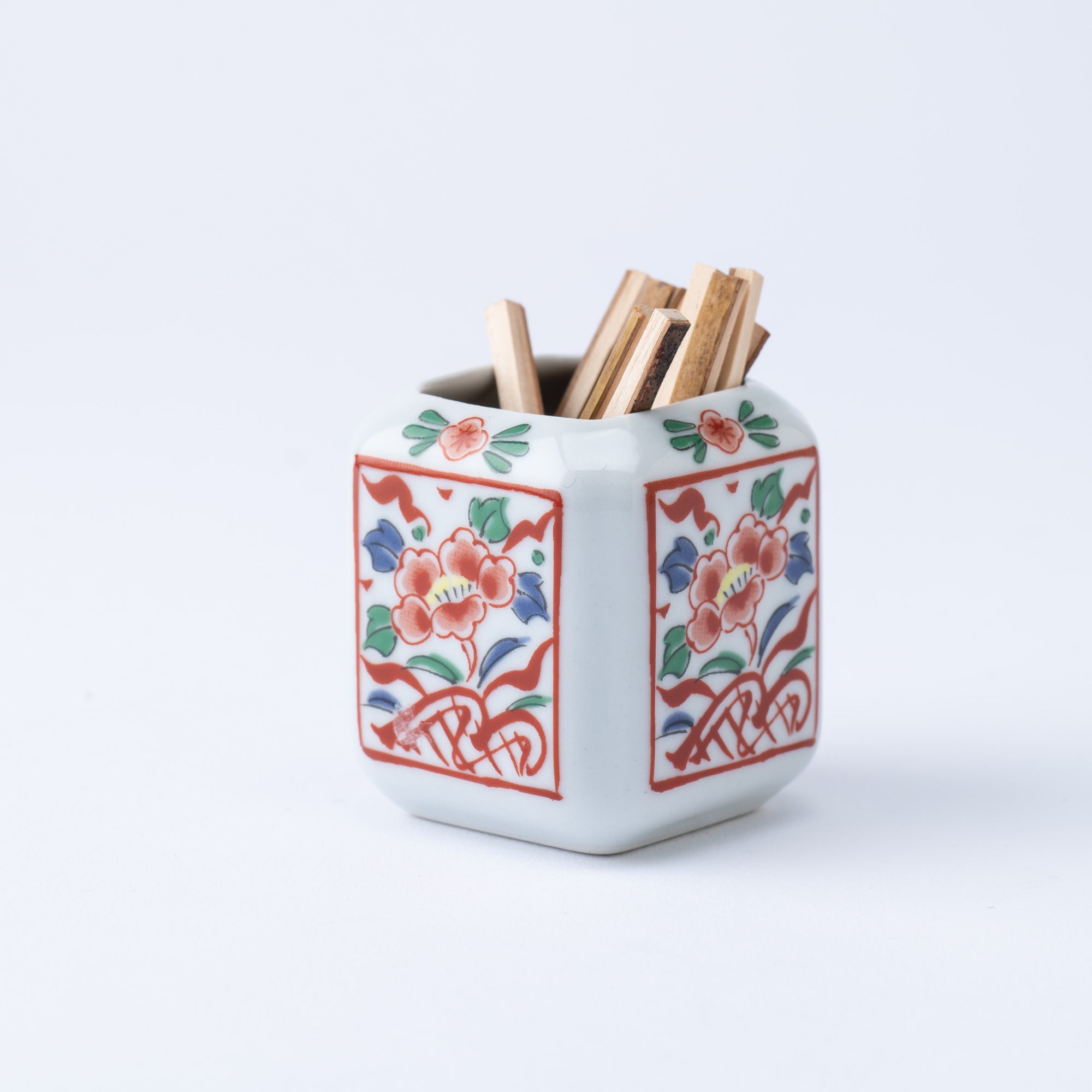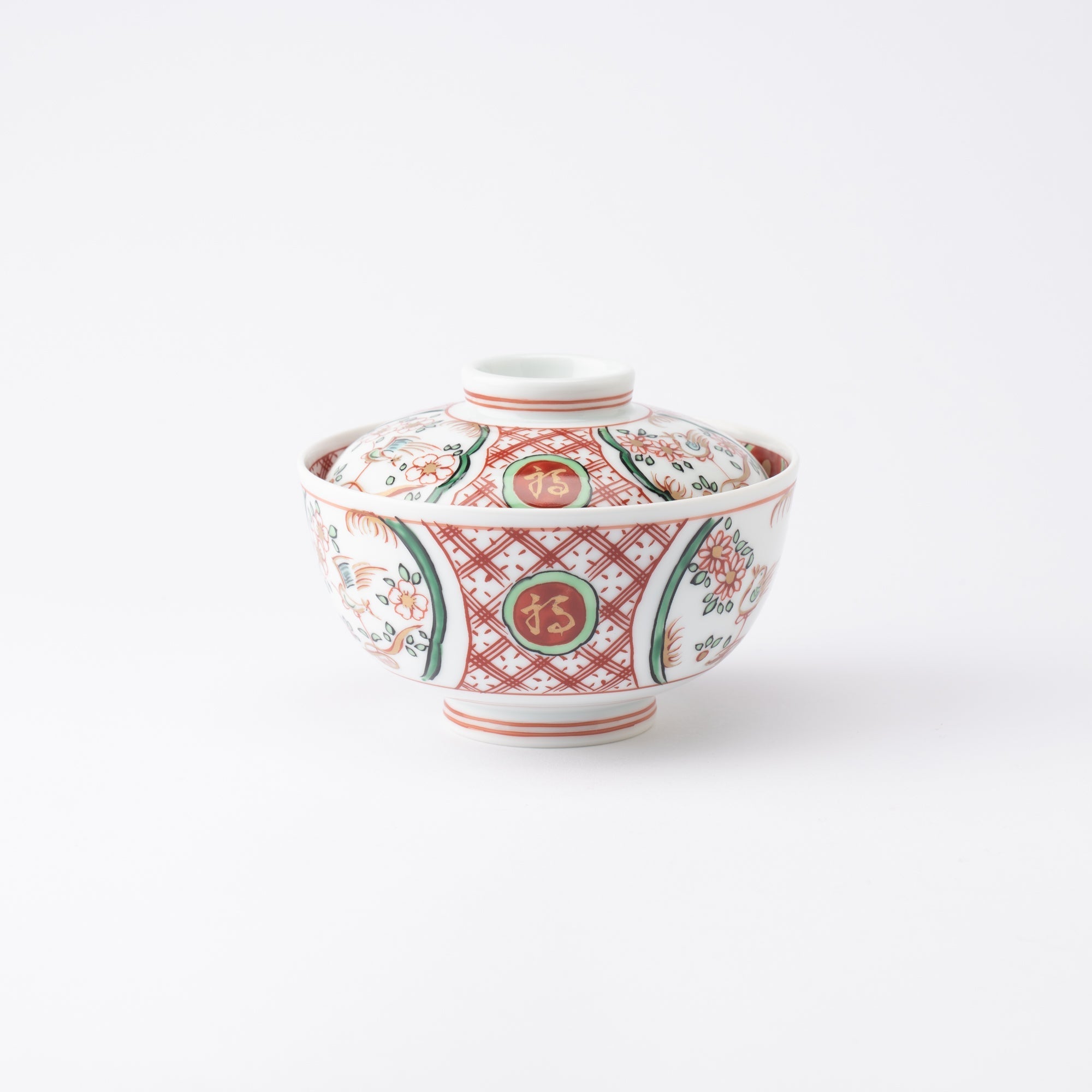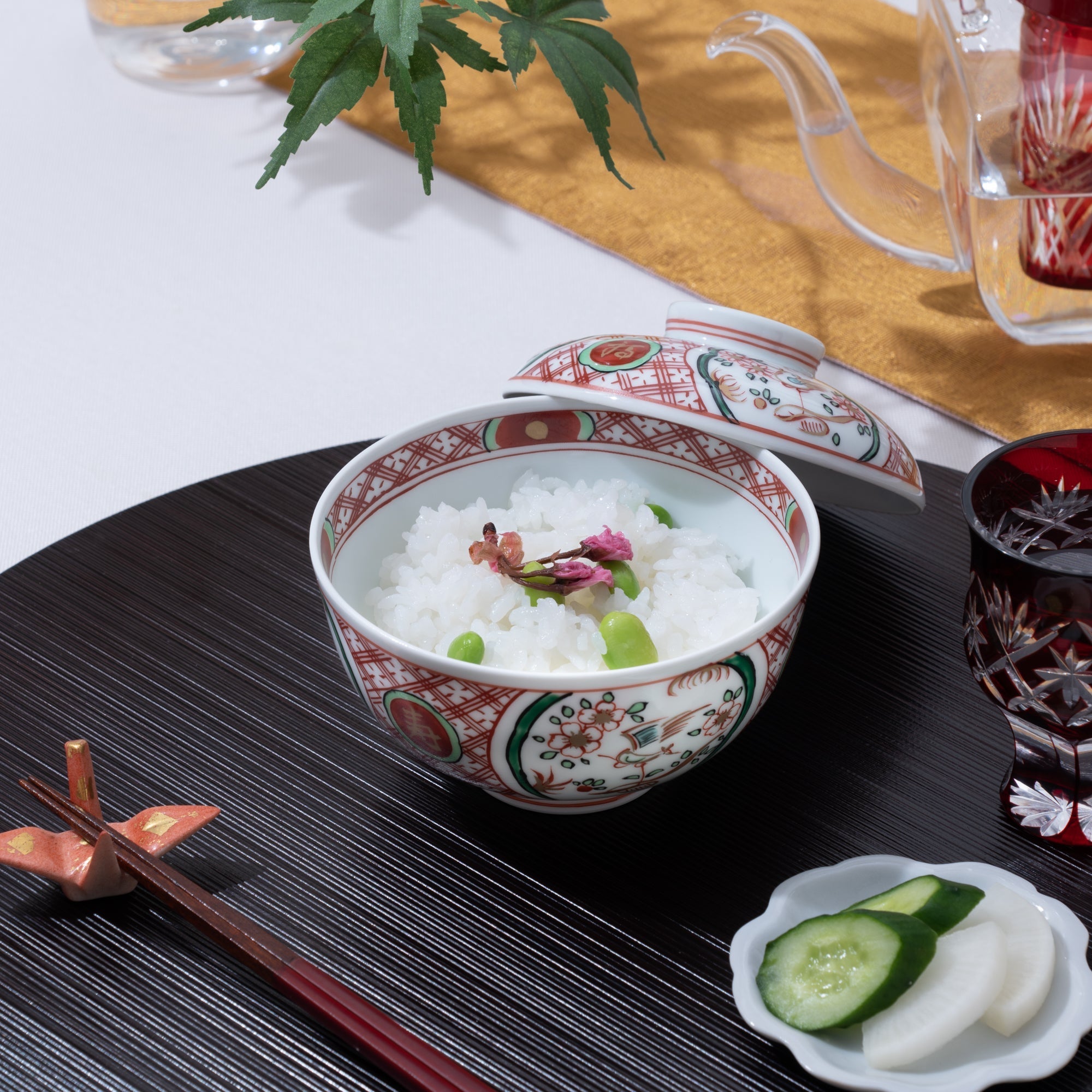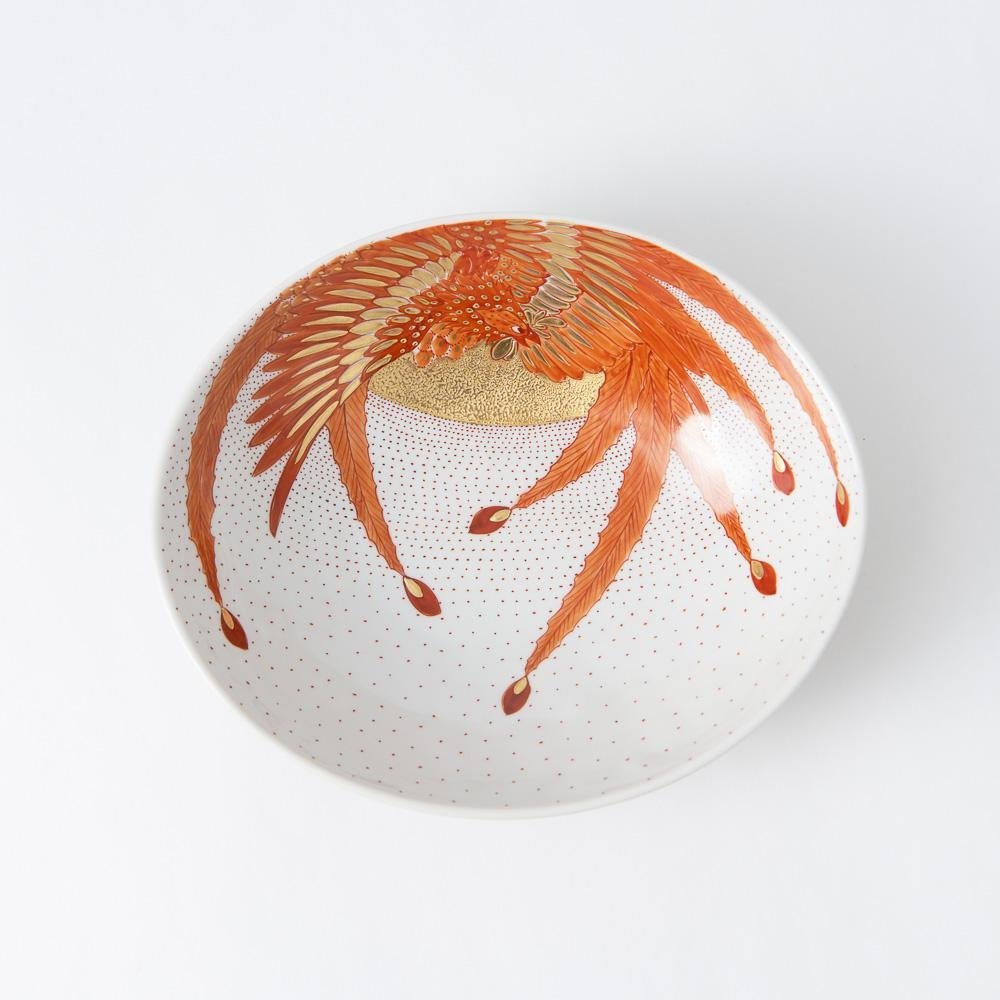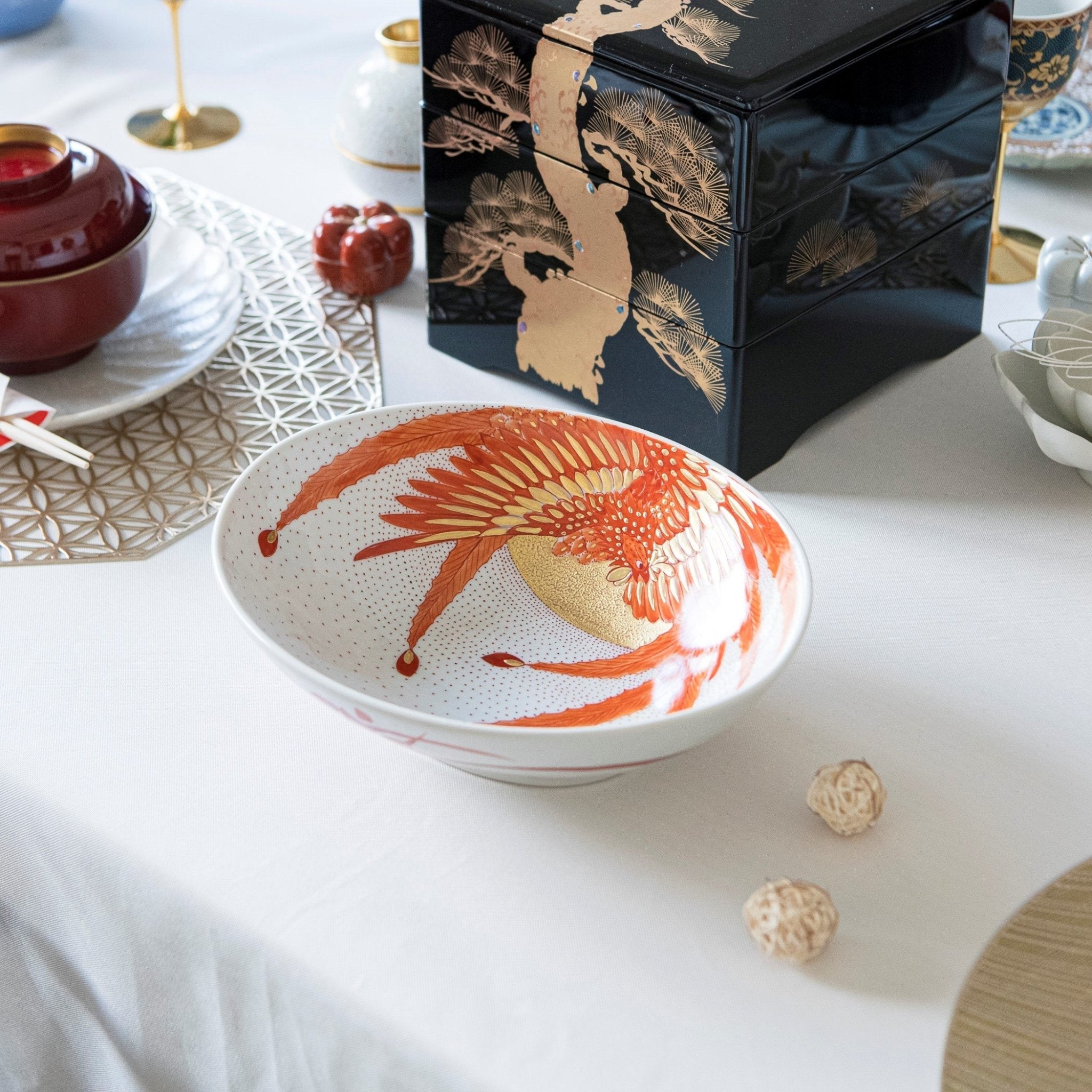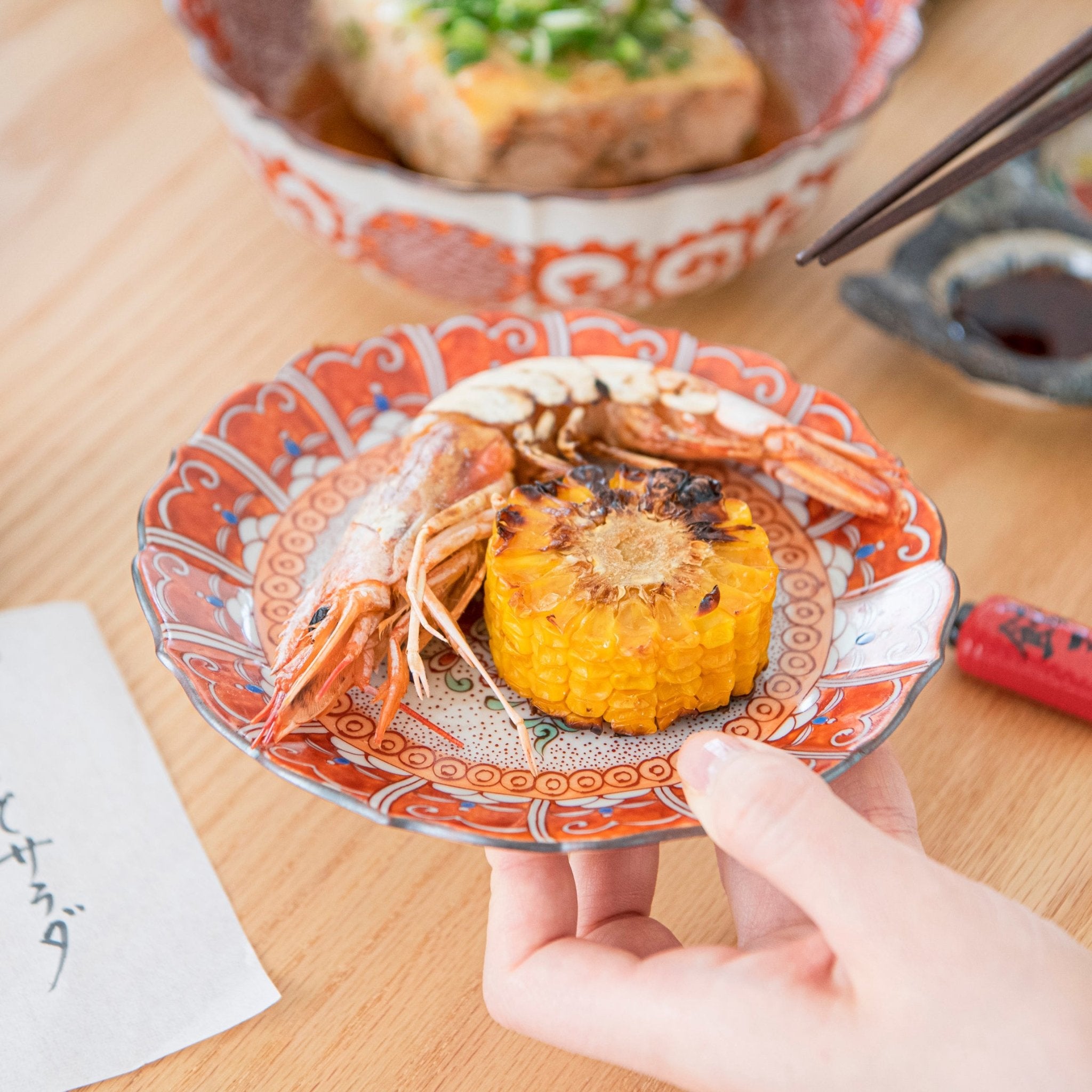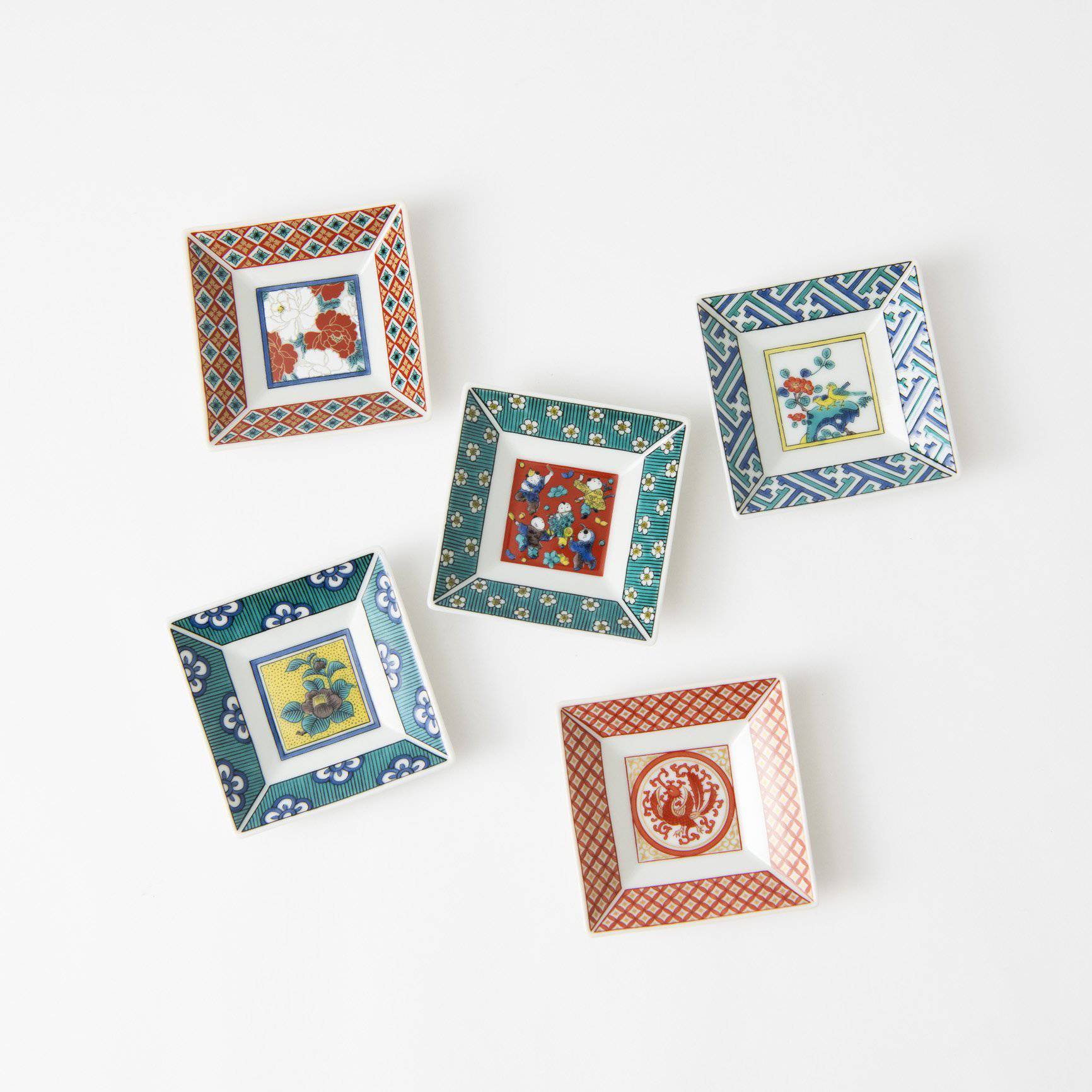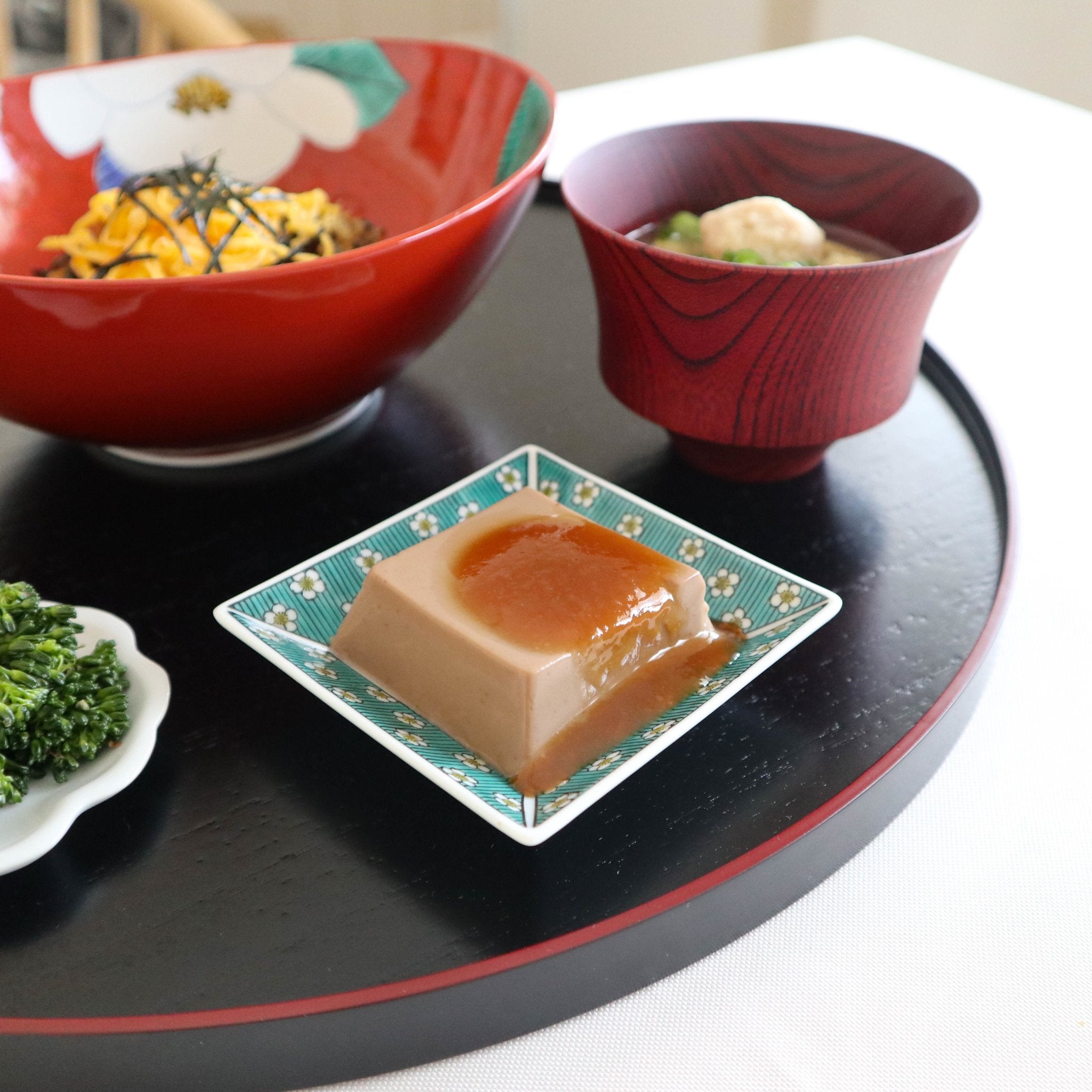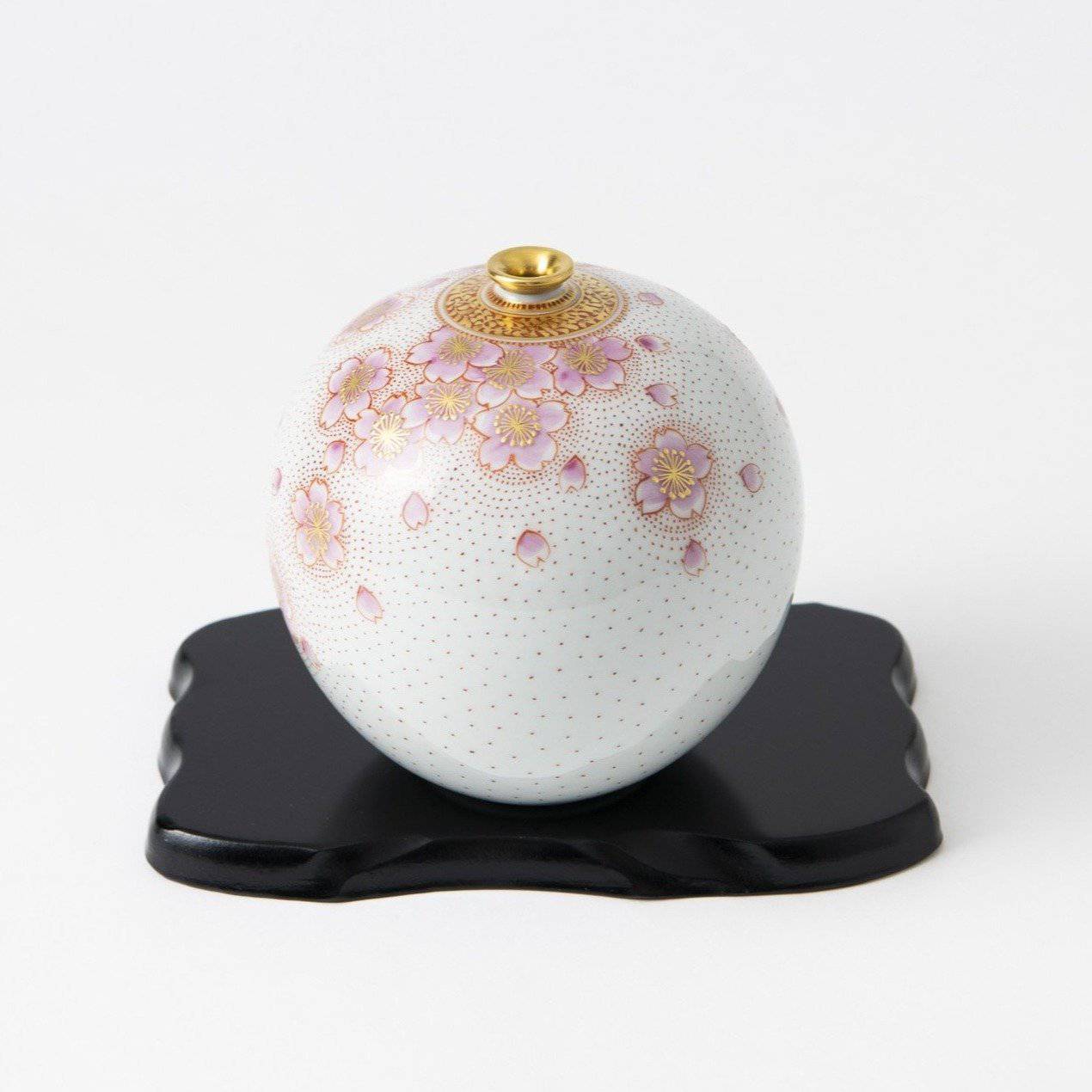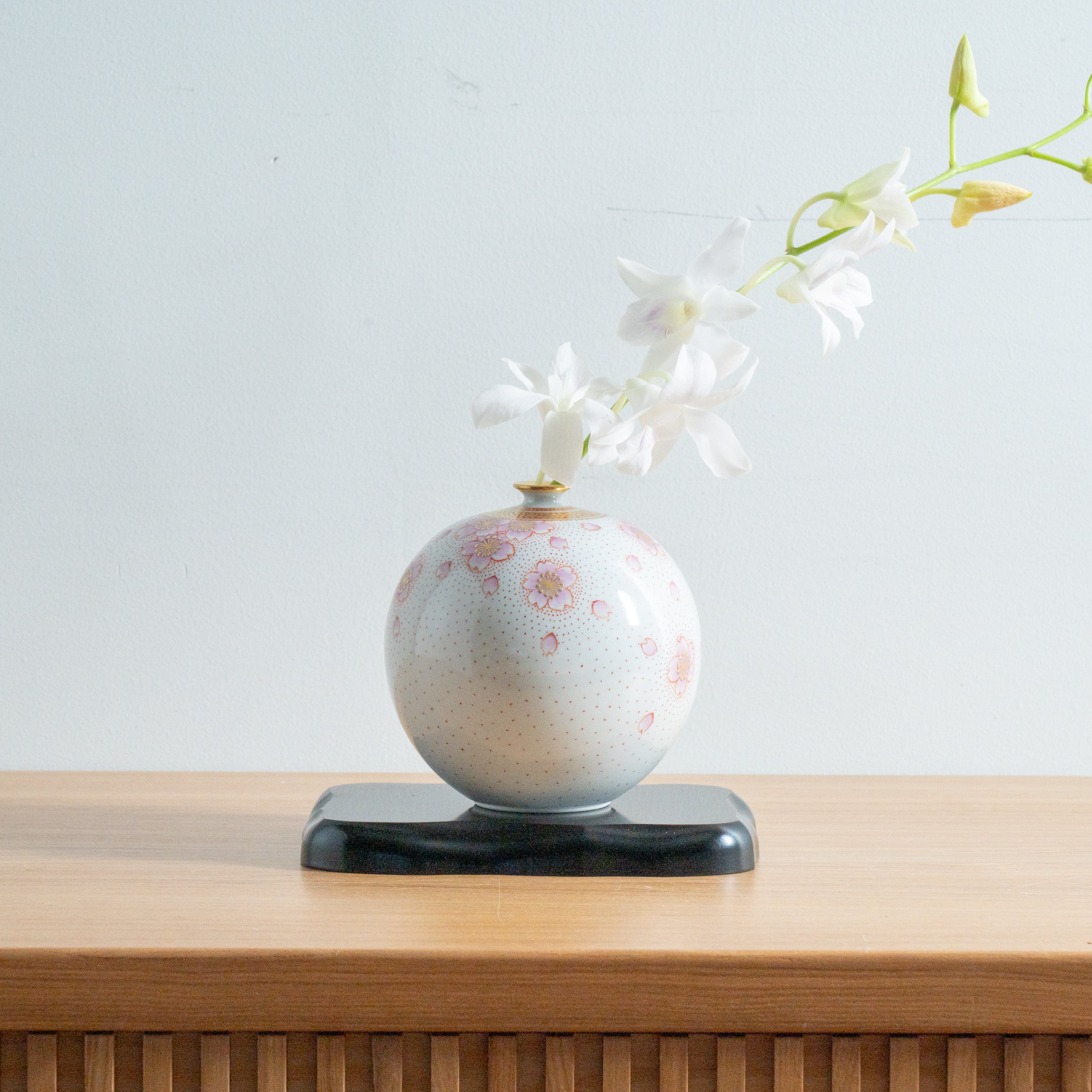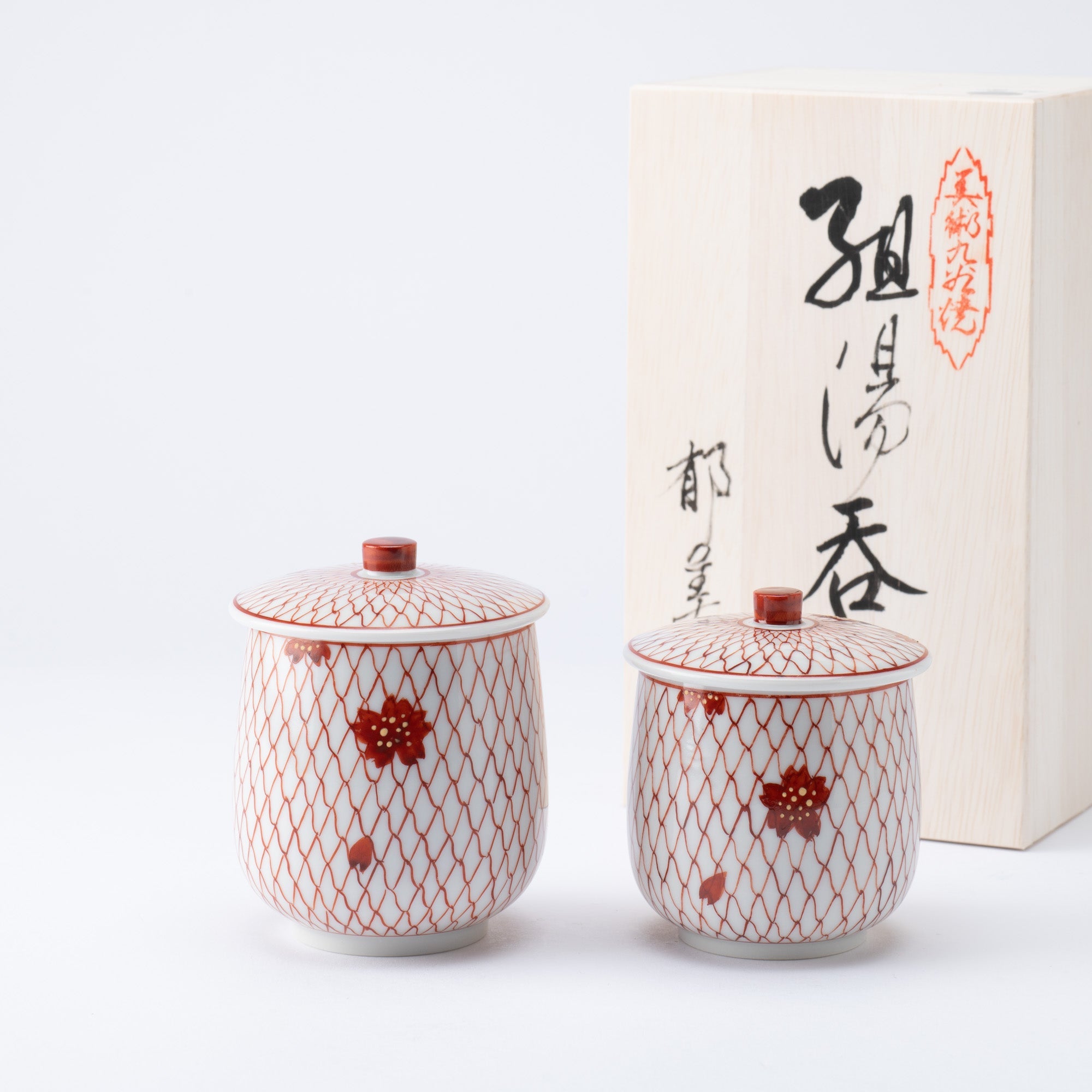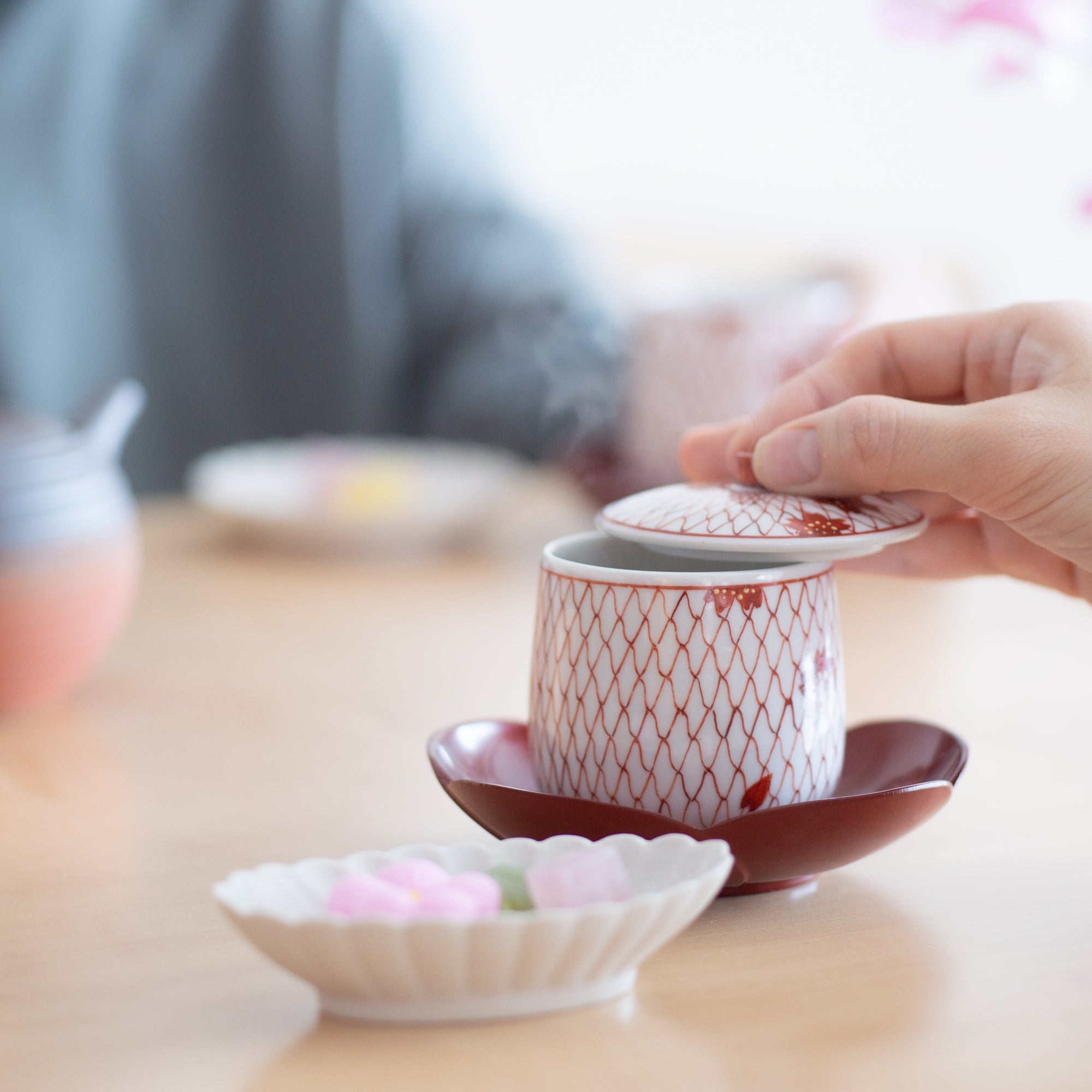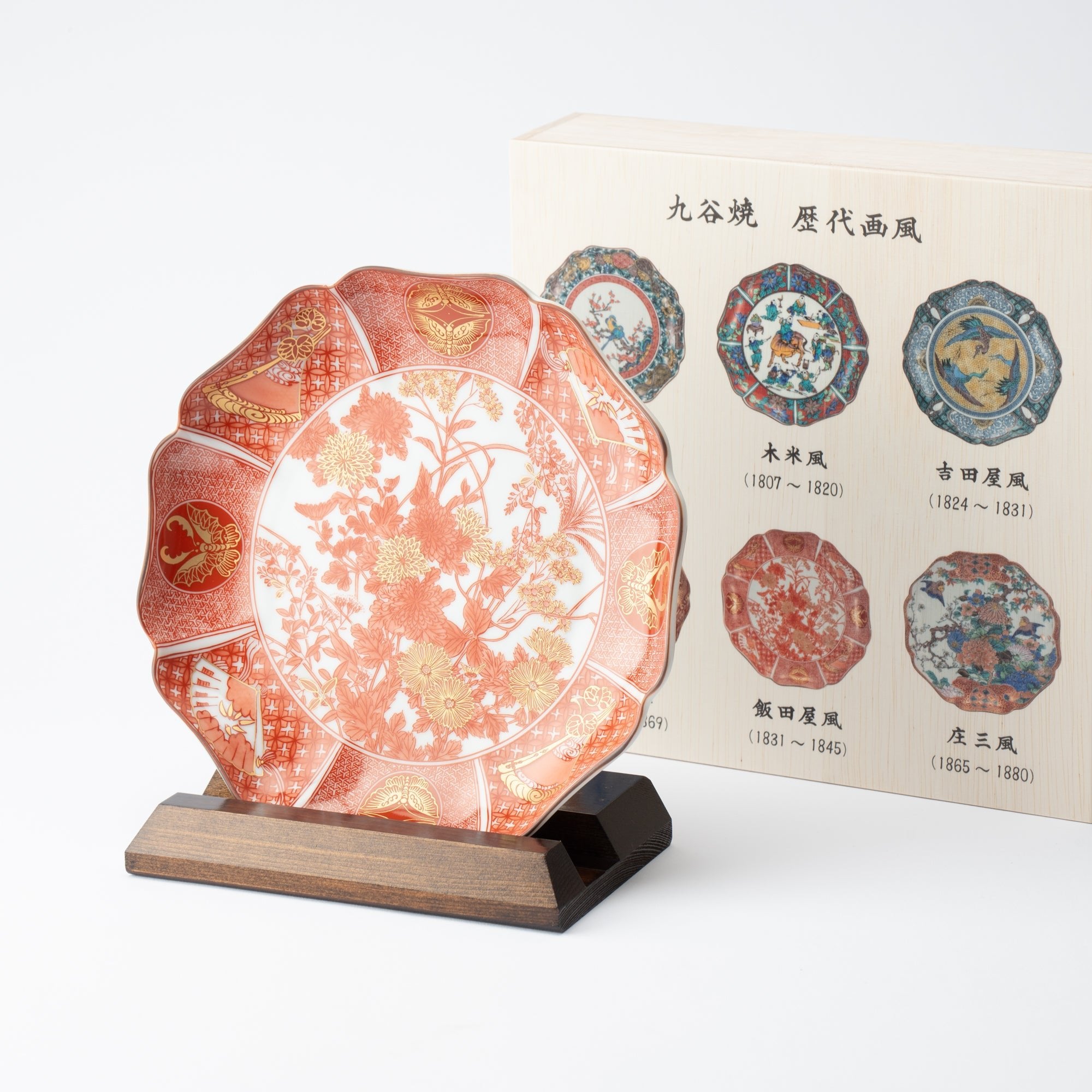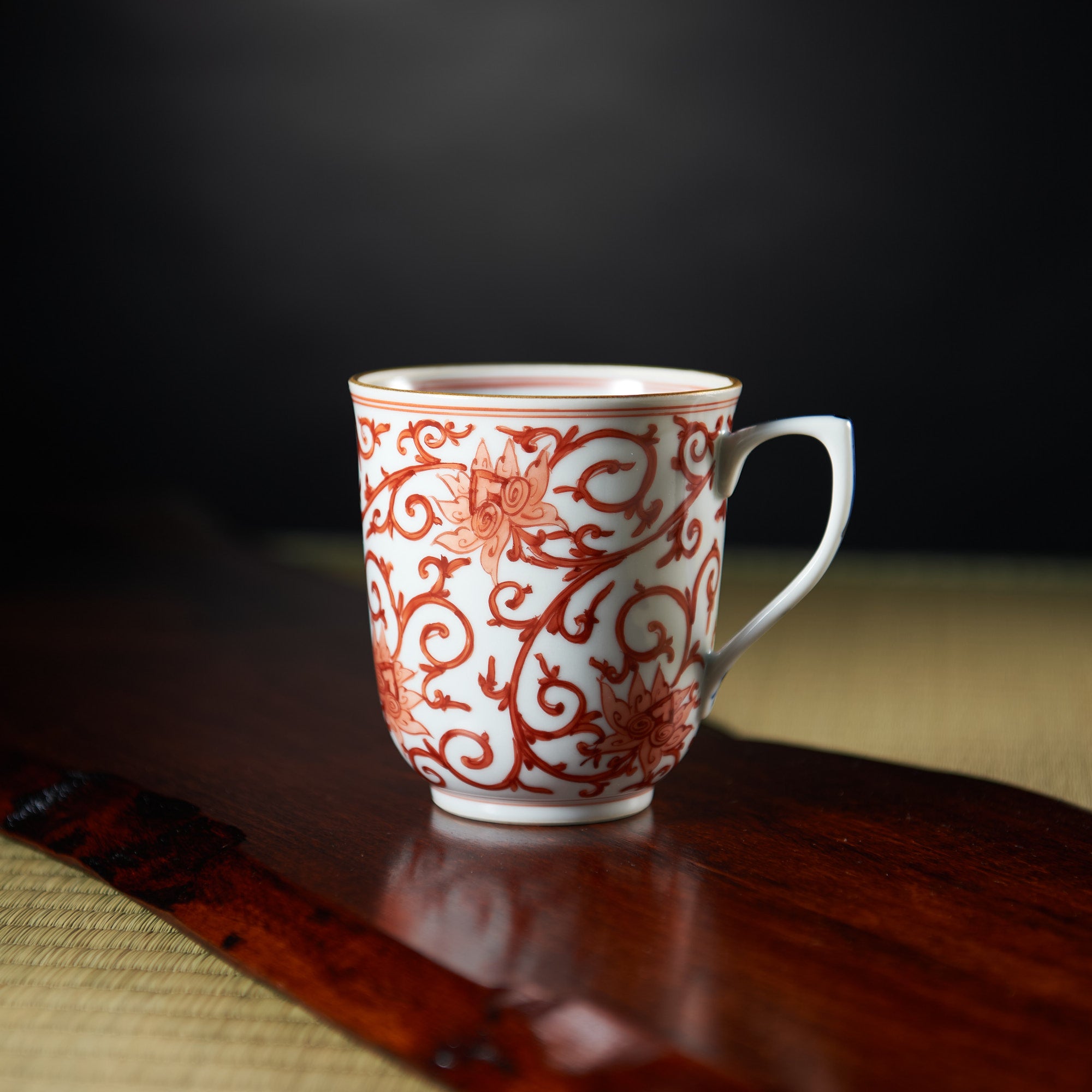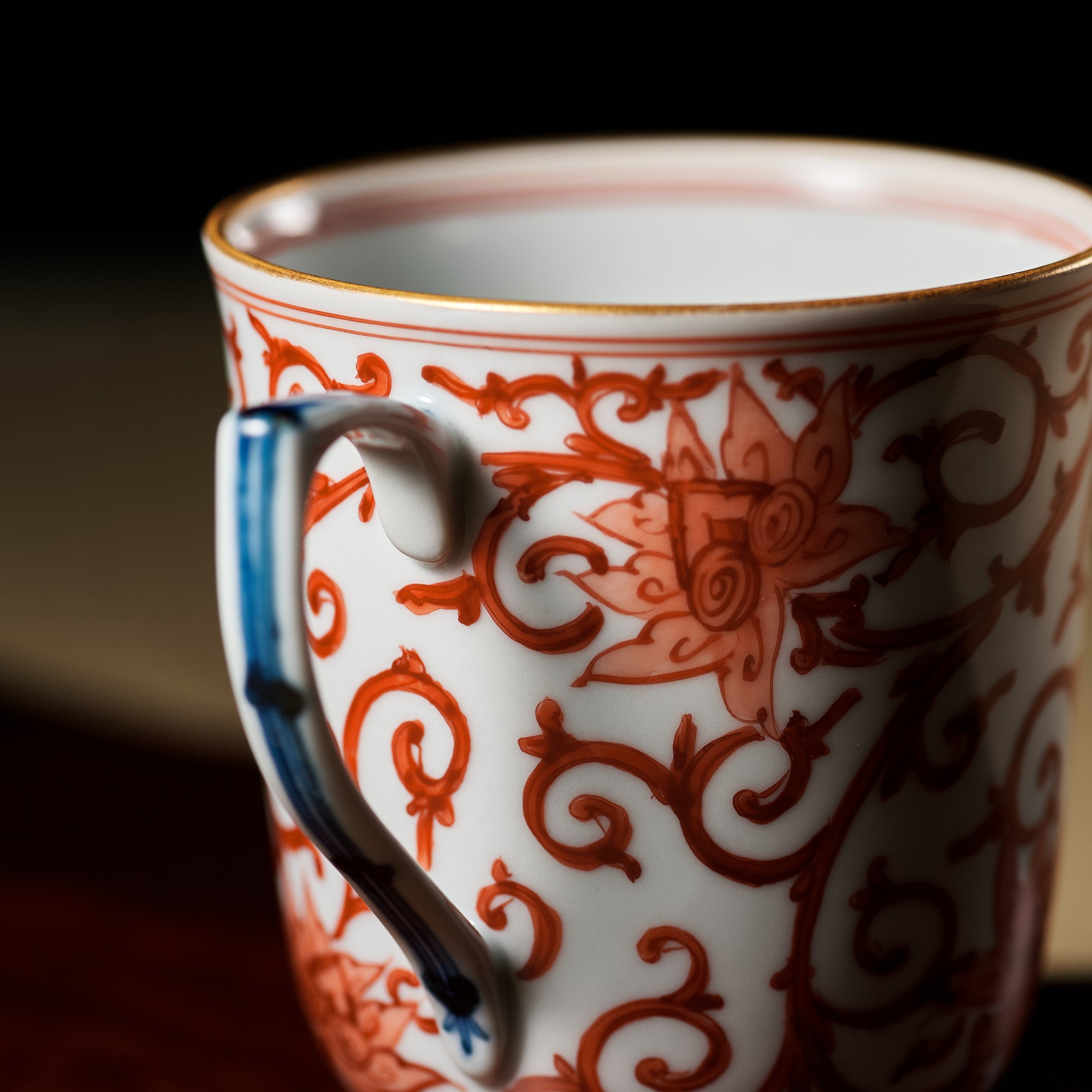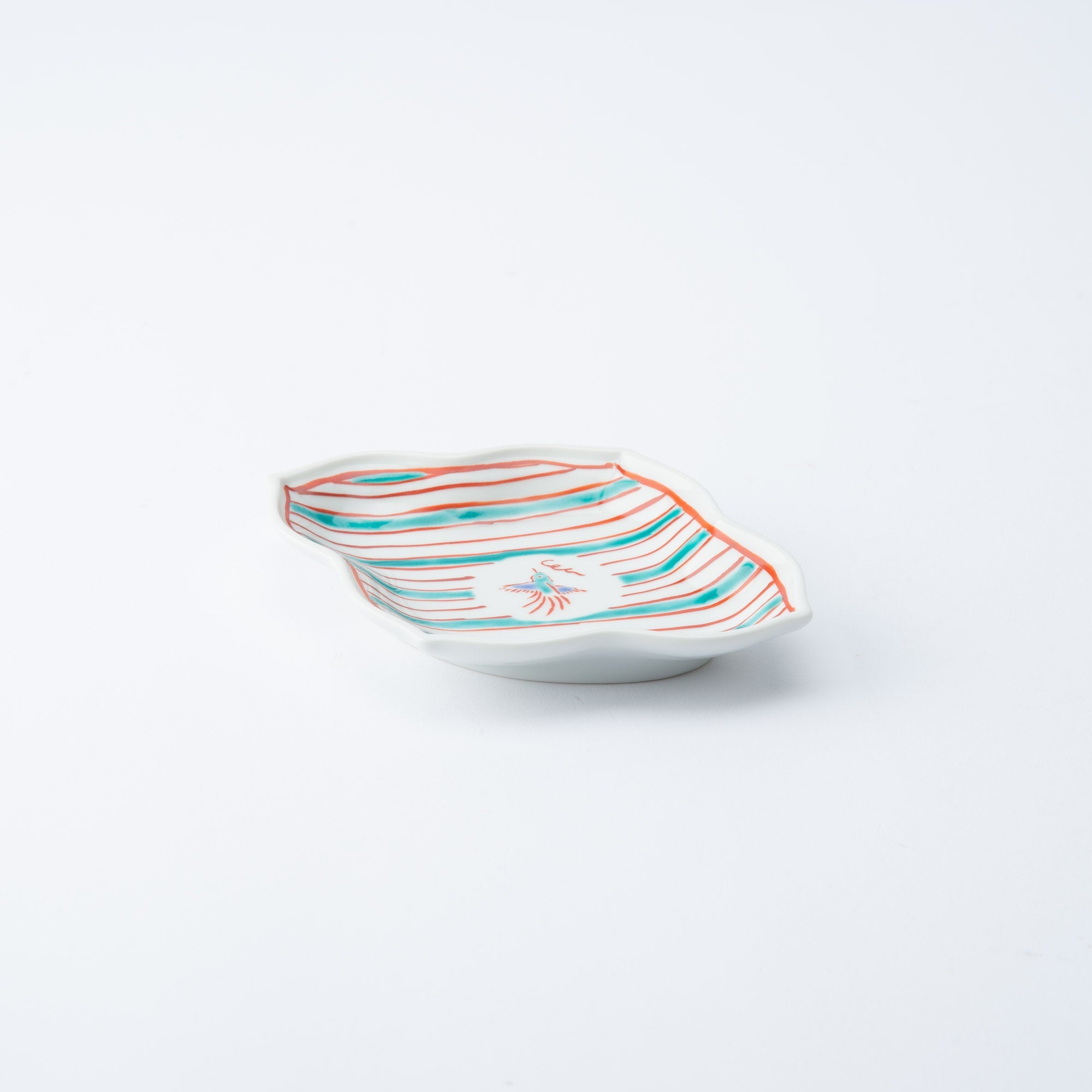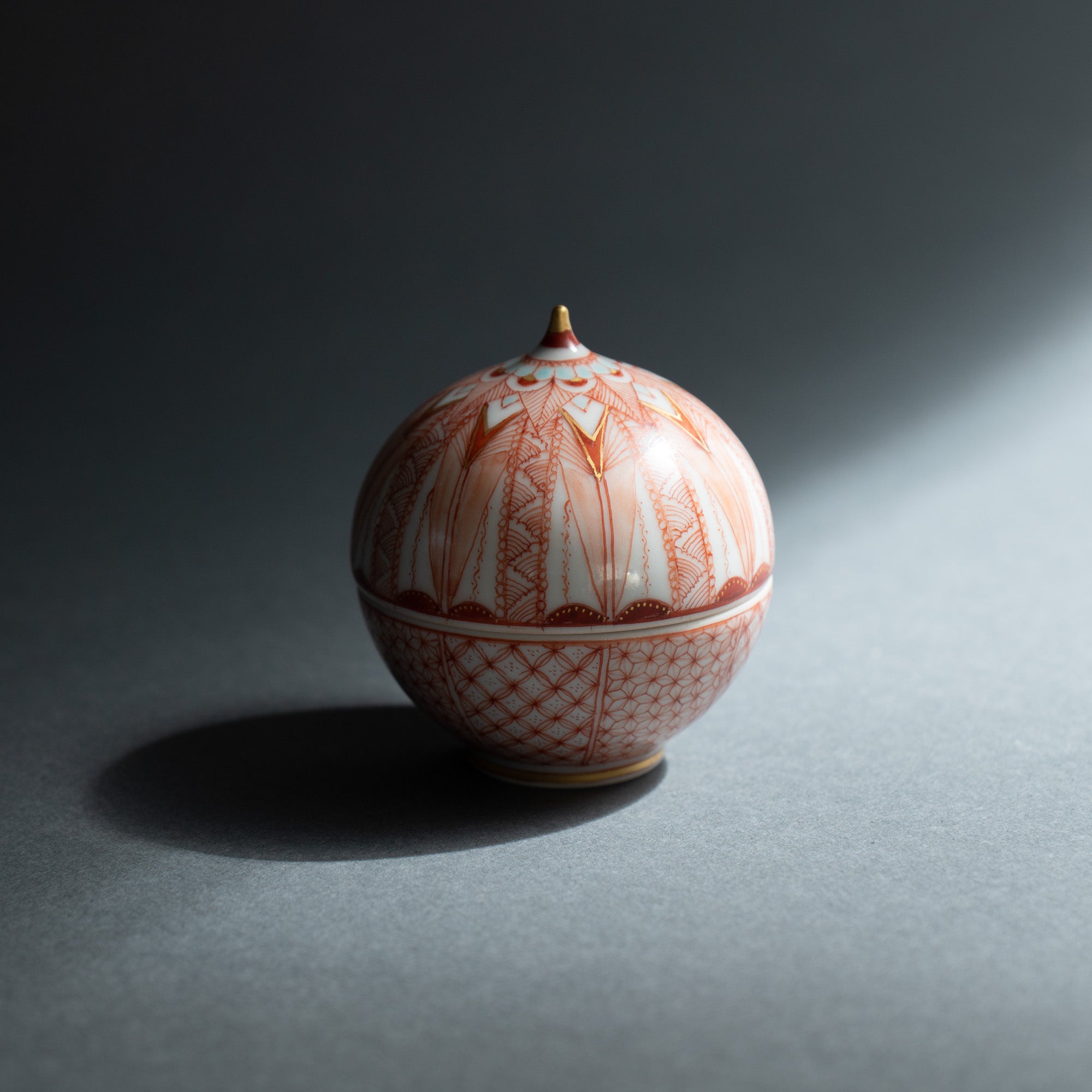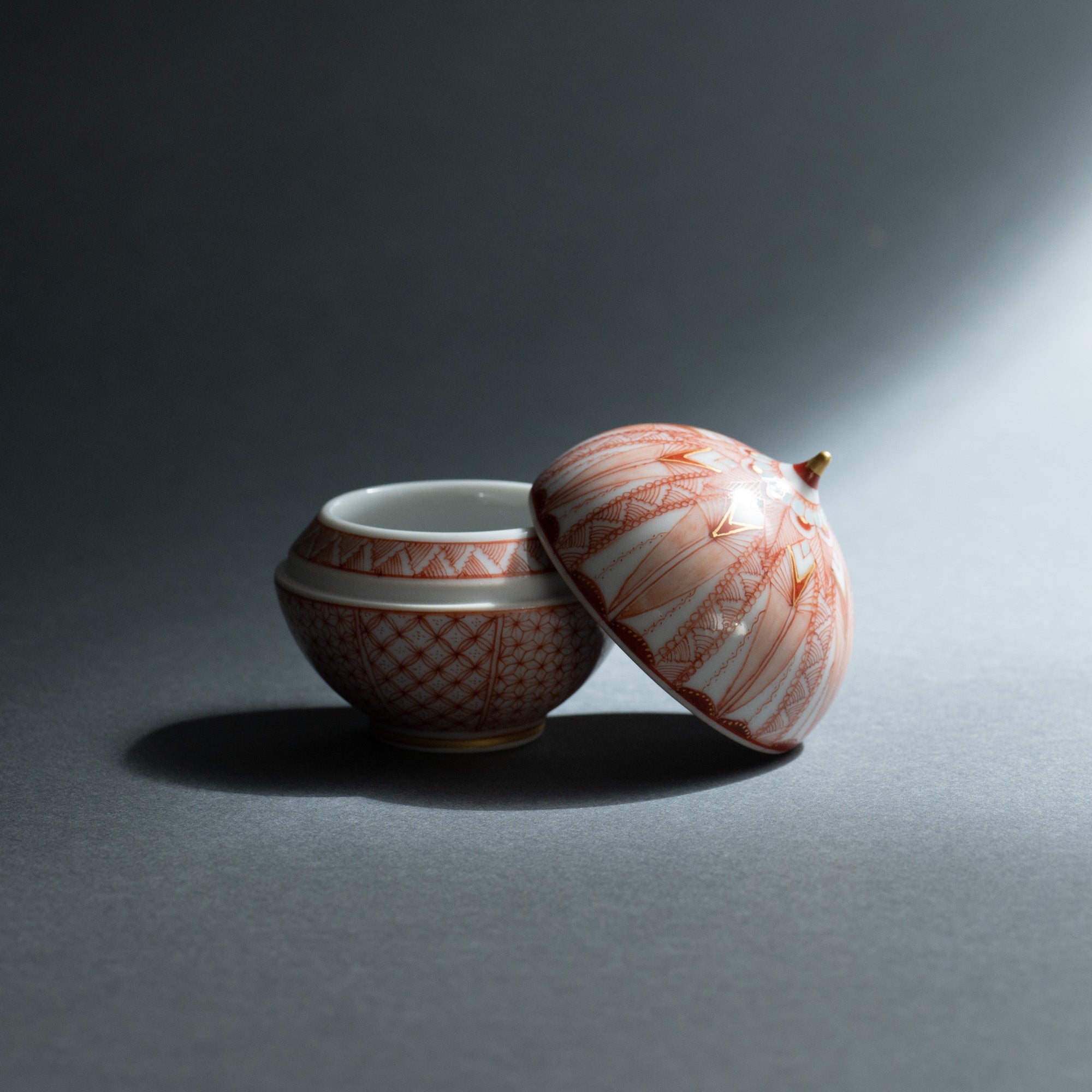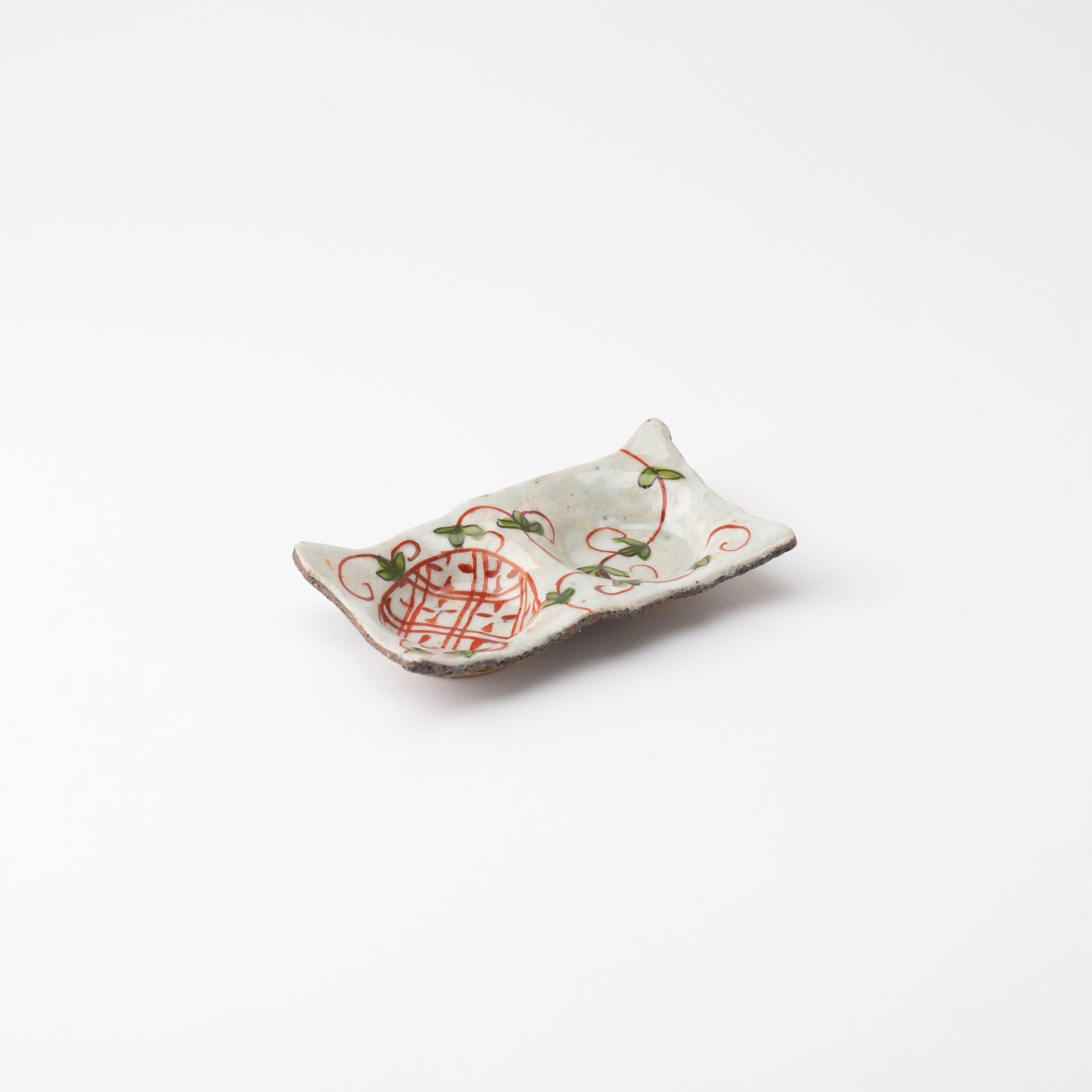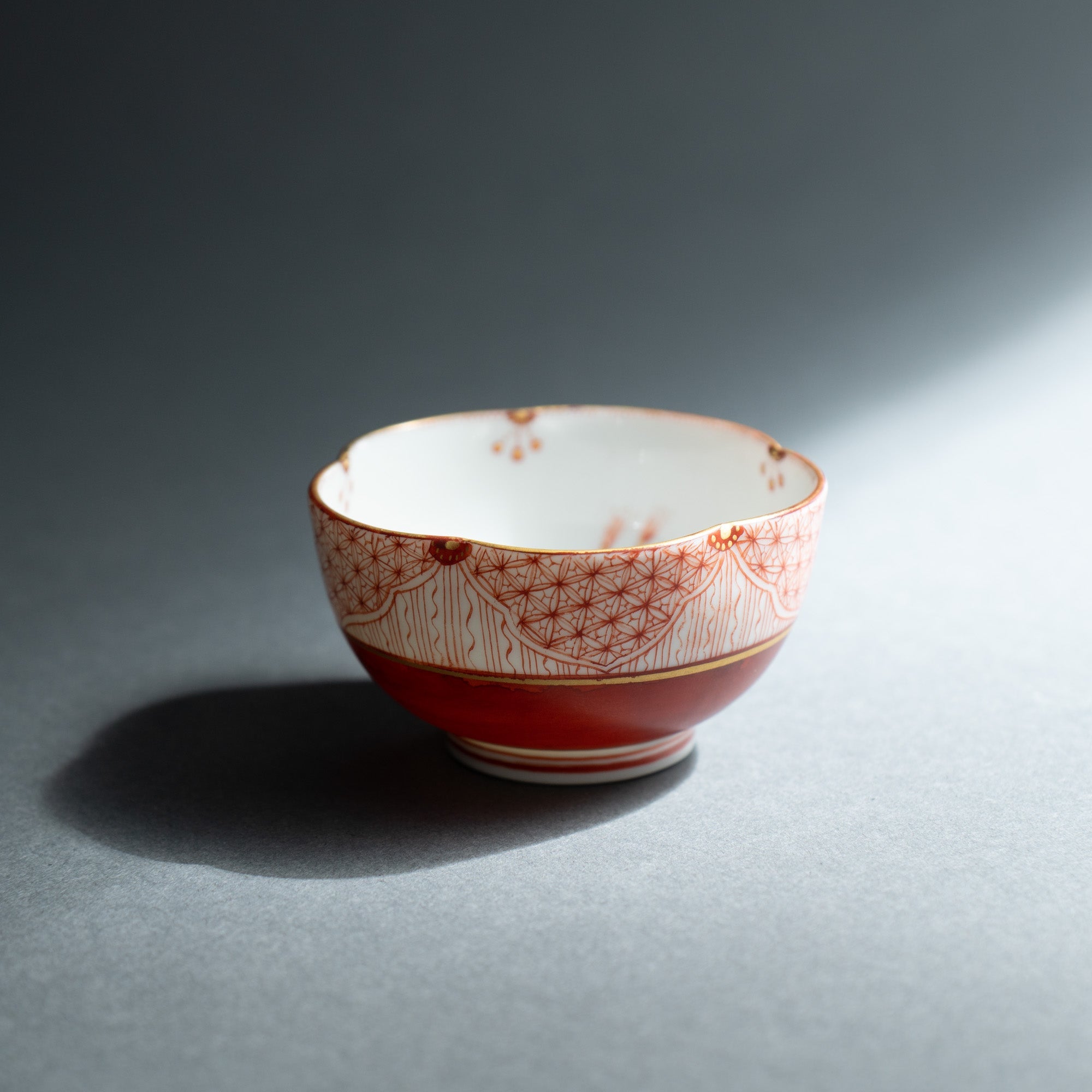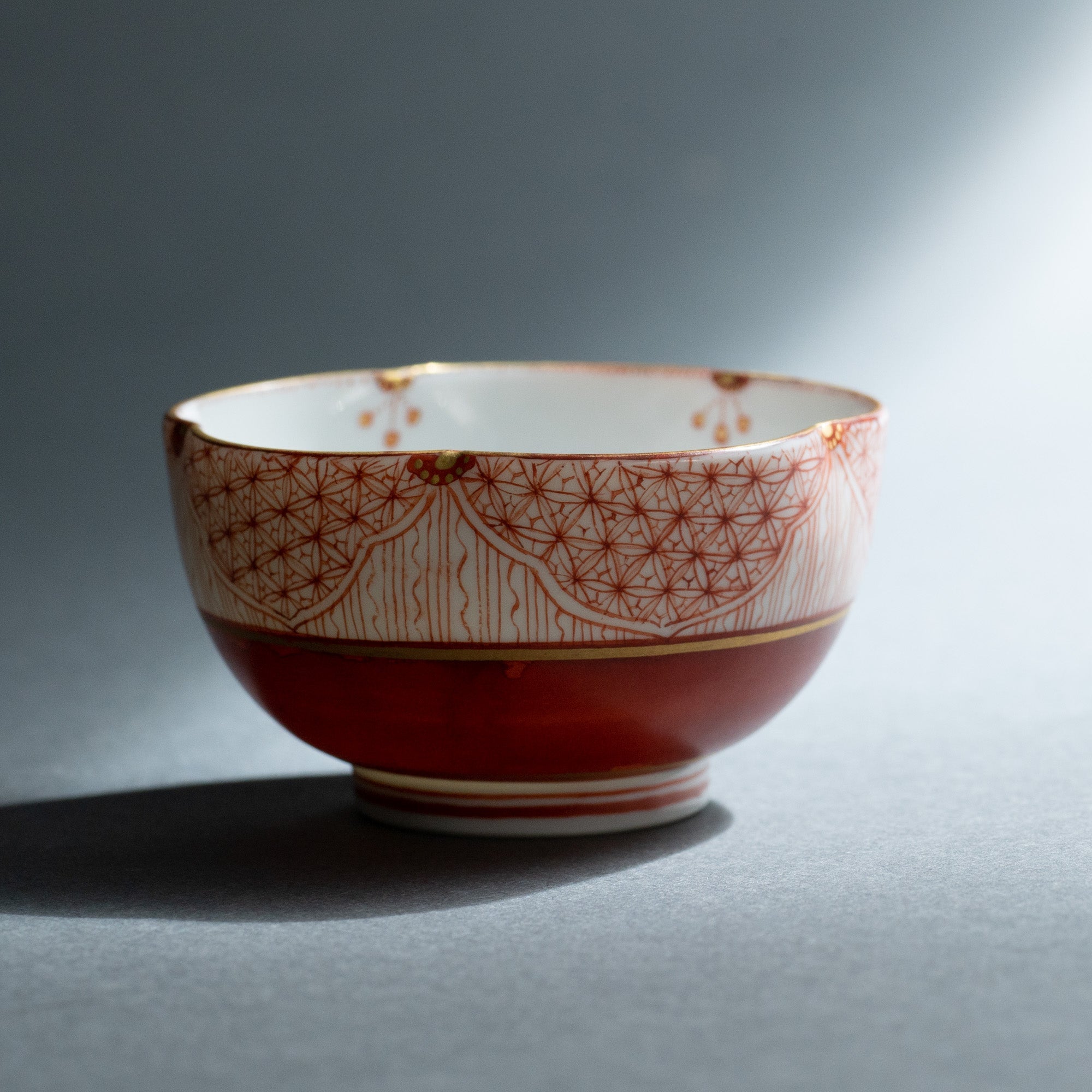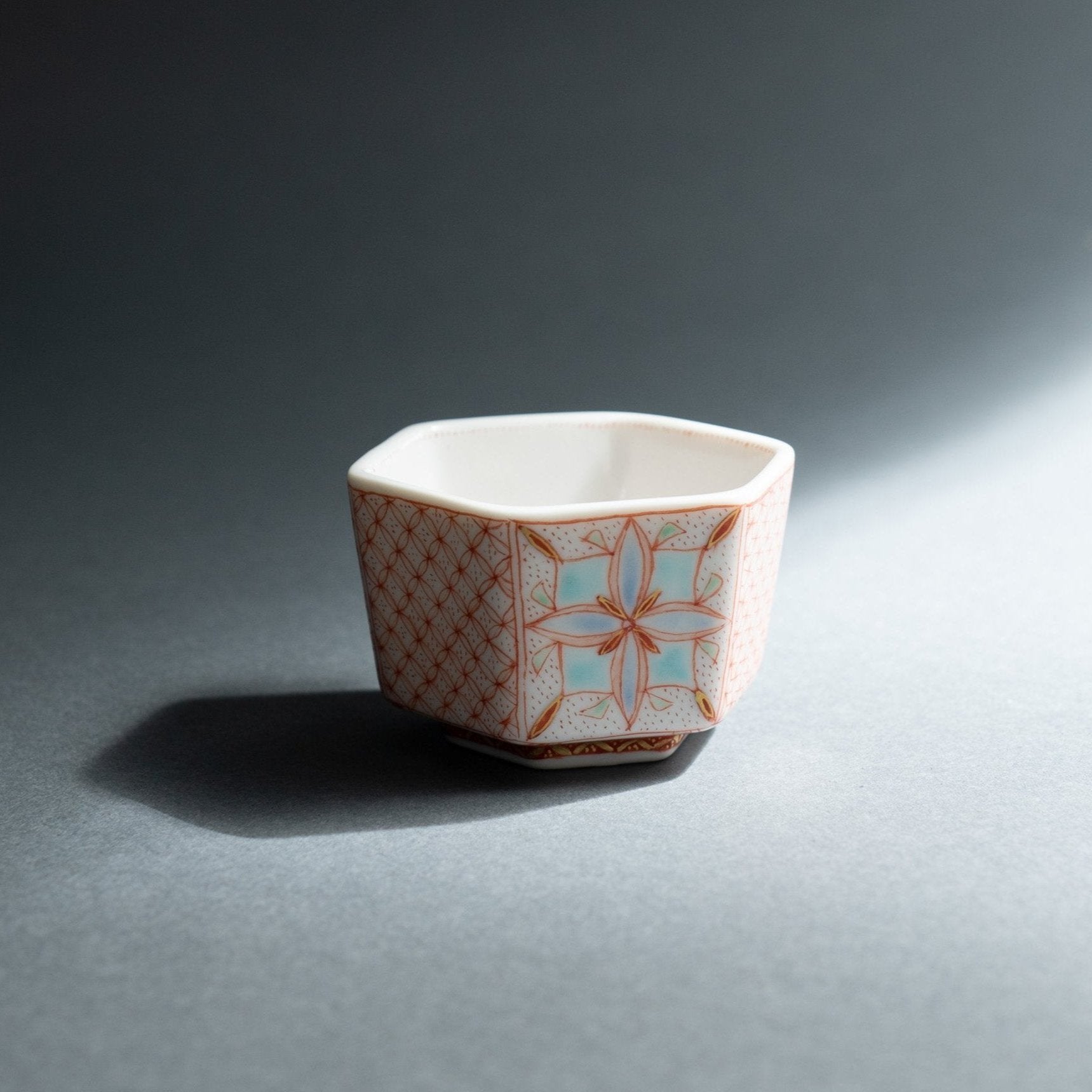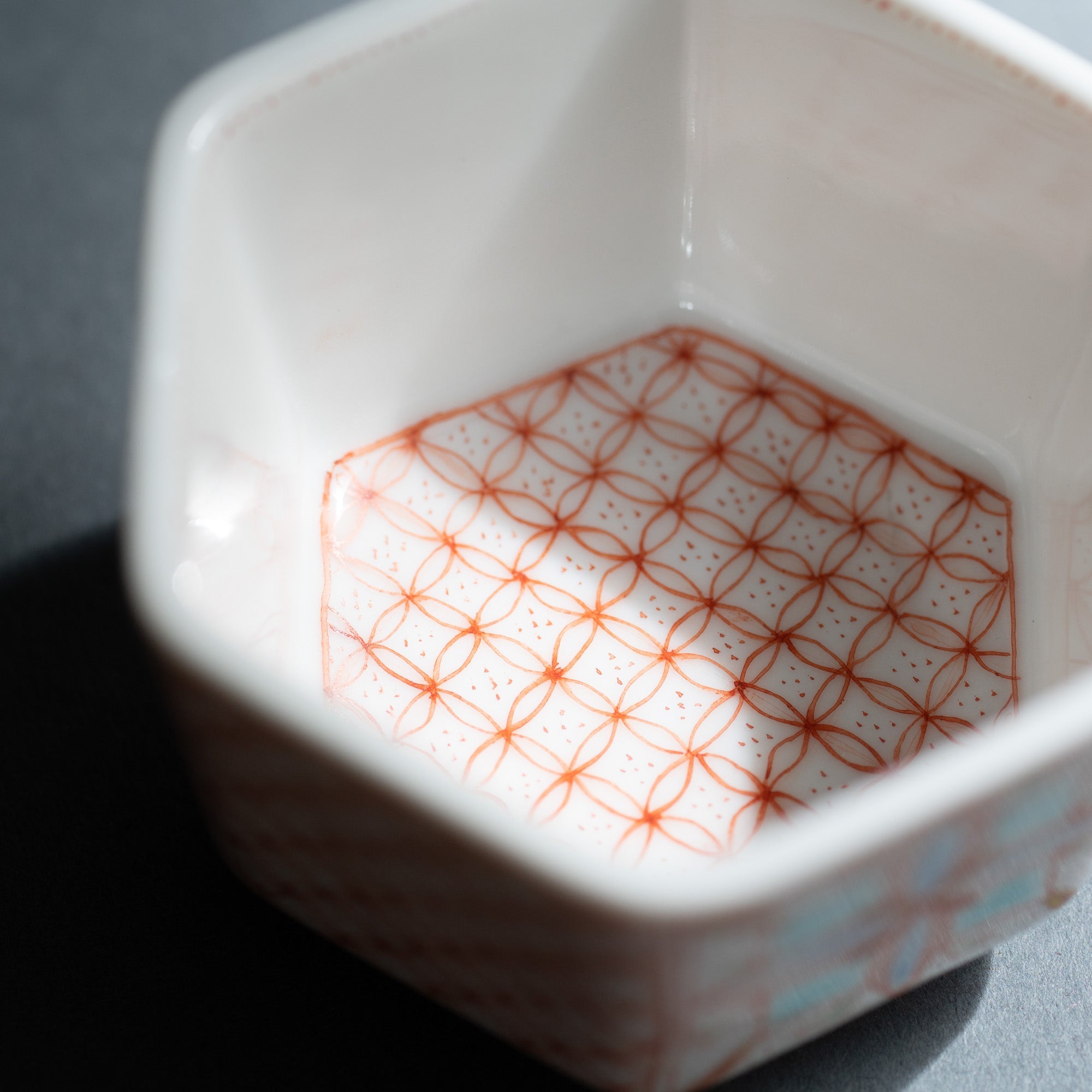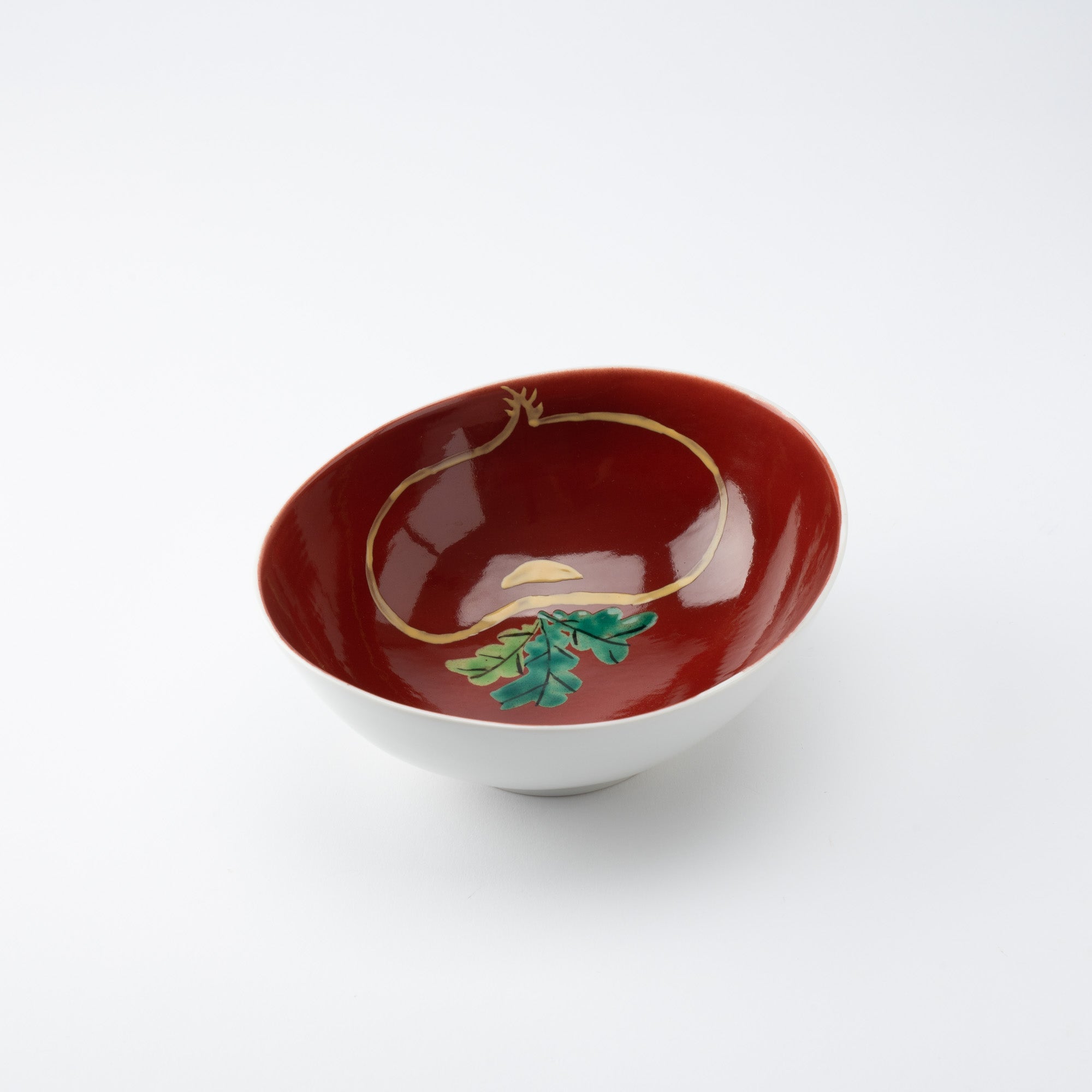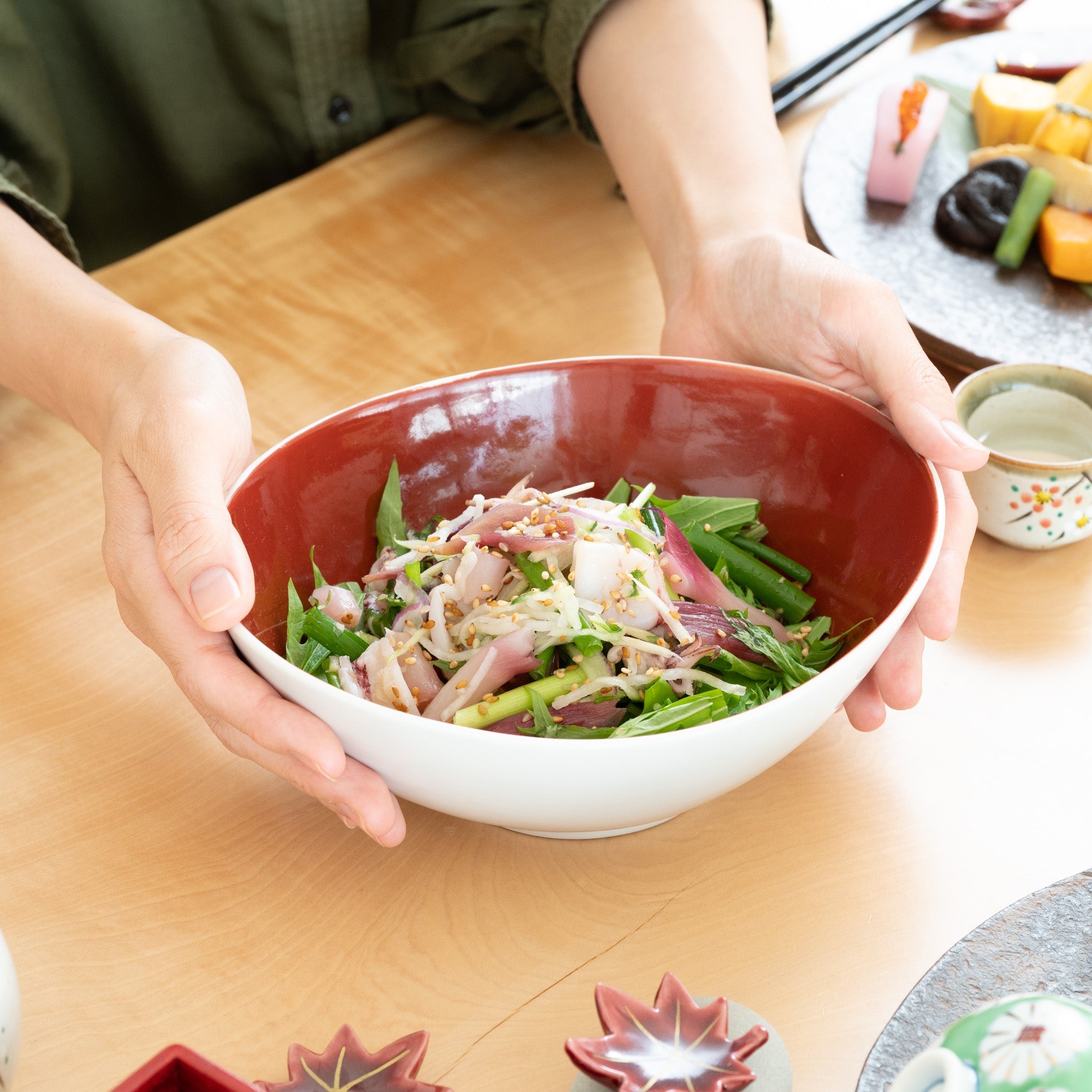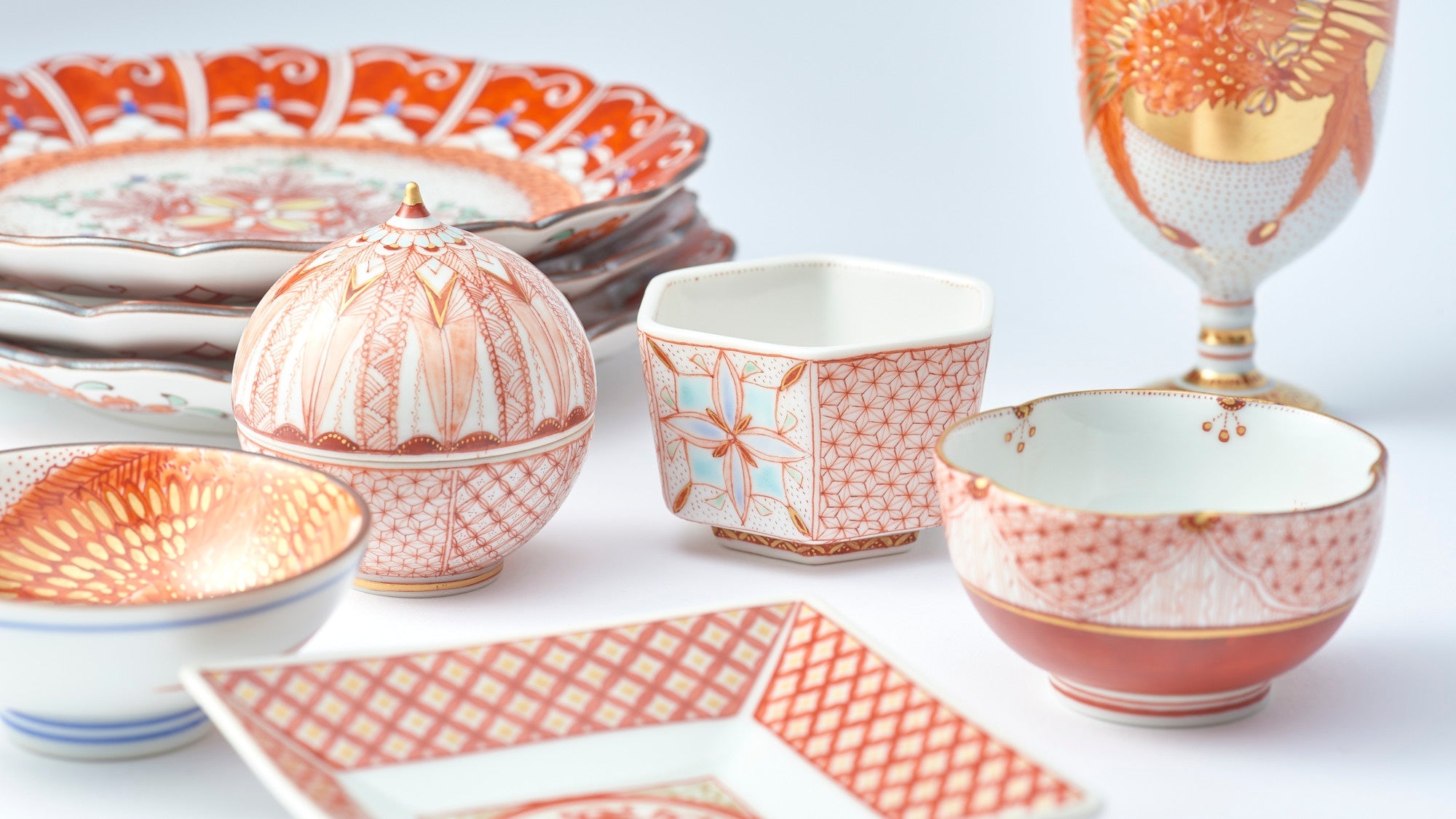
Akae
Akae, or red painting, is an overglaze decoration that primarily uses red, complemented by colors such as green, purple and blue. In China, this style originated during the Song Dynasty (960 CE–1279 CE), while in Japan, it was introduced by Sakaida Kakiemon during the Shoho era (1644 CE–1648 CE) and later found its place in Kutani ware.
In Kutani porcelain, akae-saibyo is particularly famous. Akae-saibyo literally means "fine painting in red." Using an extremely fine brush, each line is drawn on the surface of the vessel with exquisite detail, creating breathtakingly intricate patterns.
Related posts
Filters
Akae Dragon Kutani Deep Plate
Sale price$313.00 USD
Akae Arabesque Pattern Medium Bowl
Sale price$104.00 USD
Regular price$118.00 USD
Akae Red Phoenix Guinomi Sake Cup
Sale price$318.00 USD
Regular price$361.00 USD
Kinrande Sakura Guinomi Sake Cup
Sale price$275.00 USD
Regular price$313.00 USD
Red Phoenix Sakazuki Flat Sake Cup
Sale price$193.00 USD
Regular price$219.00 USD
Akae Kutani Medium Bowl
Sale price$344.00 USD
Regular price$391.00 USD
Akae Peony Kutani Large Bowl
Sale price$124.00 USD
Regular price$141.00 USD
Nishiki Red Plum Blossom Toothpick Holder
Sale price$13.00 USD
Akae Soba Choko Cup
Sale price$25.00 USD
Regular price$28.00 USD
Nishiki Flower Patterned Banreki Toothpick Holder
Sale price$13.00 USD
Akae Flower and Bird Kobachi Small Bowl With Lid
Sale price$125.00 USD
Regular price$142.00 USD
Akae Red Phoenix Kutani Large Bowl
Sale price$423.00 USD
Regular price$480.00 USD
Akae Kutani Plate Set
Sale price$361.00 USD
Jidai Kutani Square Sauce Plate Set
Sale price$121.00 USD
Kinrande Sakura Japanese Flower Vase
Sale price$937.00 USD
Red Mesh with Sakura Yunomi Japanese Teacup Pair
Sale price$360.00 USD
Art Styles of the Past IIdaya Akae Kutani Decorative Plate
Sale price$188.00 USD
Red Peony and Arabesque Kutani Mug
Sale price$469.00 USD
Flying Bird Diamond Shaped Side Plate
Sale price$32.00 USD
Akae-Saibyo Elephant Sake Cup with Stand
Sale price$914.00 USD
Arabesque Divided Sauce Plate
Sale price$23.00 USD
Akae-Saibyo Gourd Sake Cup
Sale price$703.00 USD
Akae-Saibyo Sarasa Sake Cup
Sale price$385.00 USD
Red Turnip Medium Bowl
Sale price$124.00 USD
Regular price$141.00 USD


